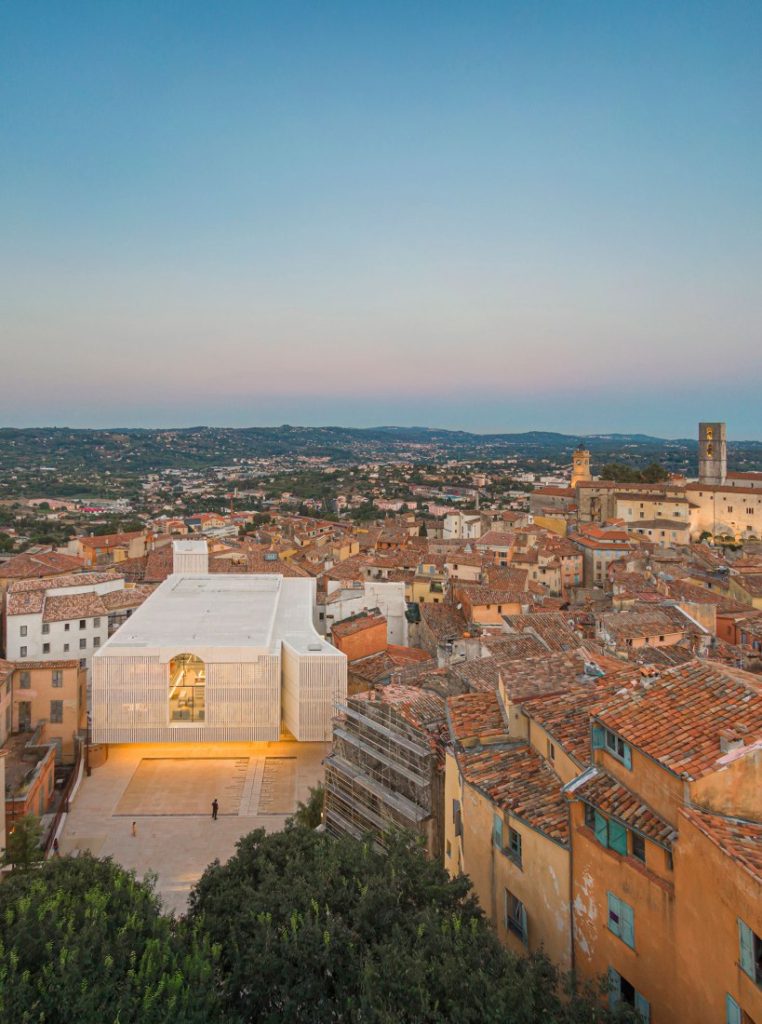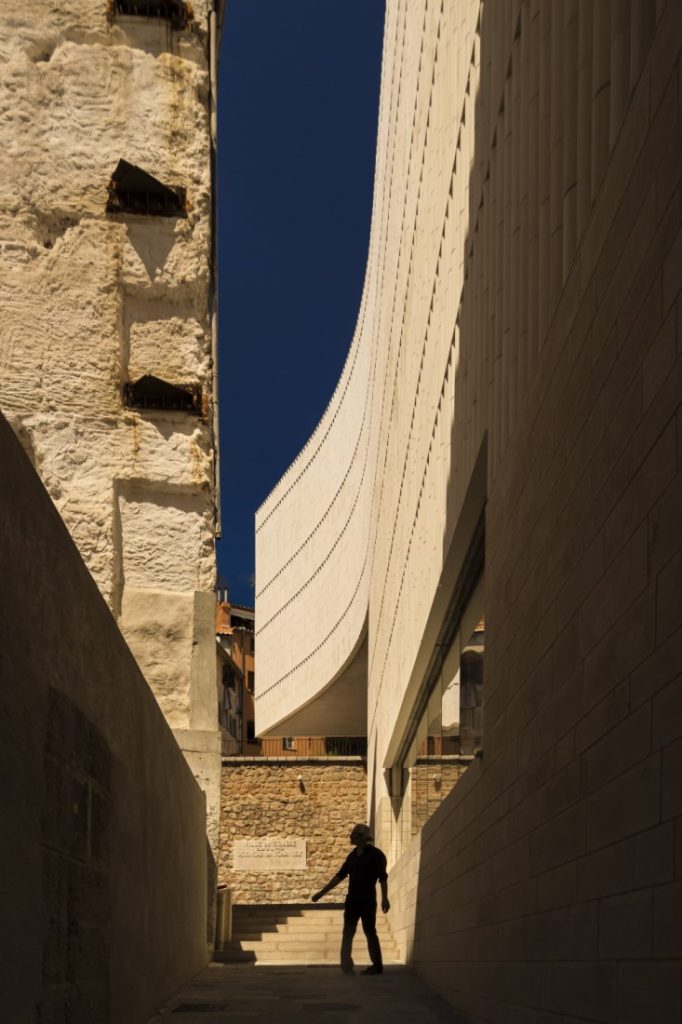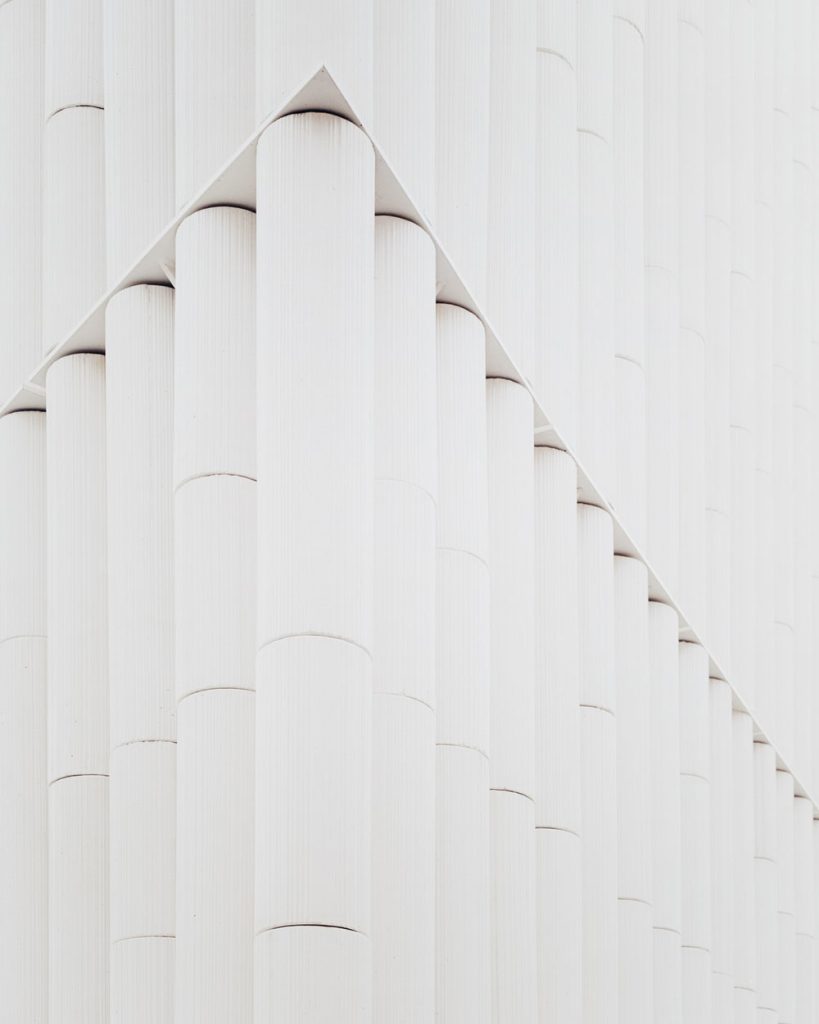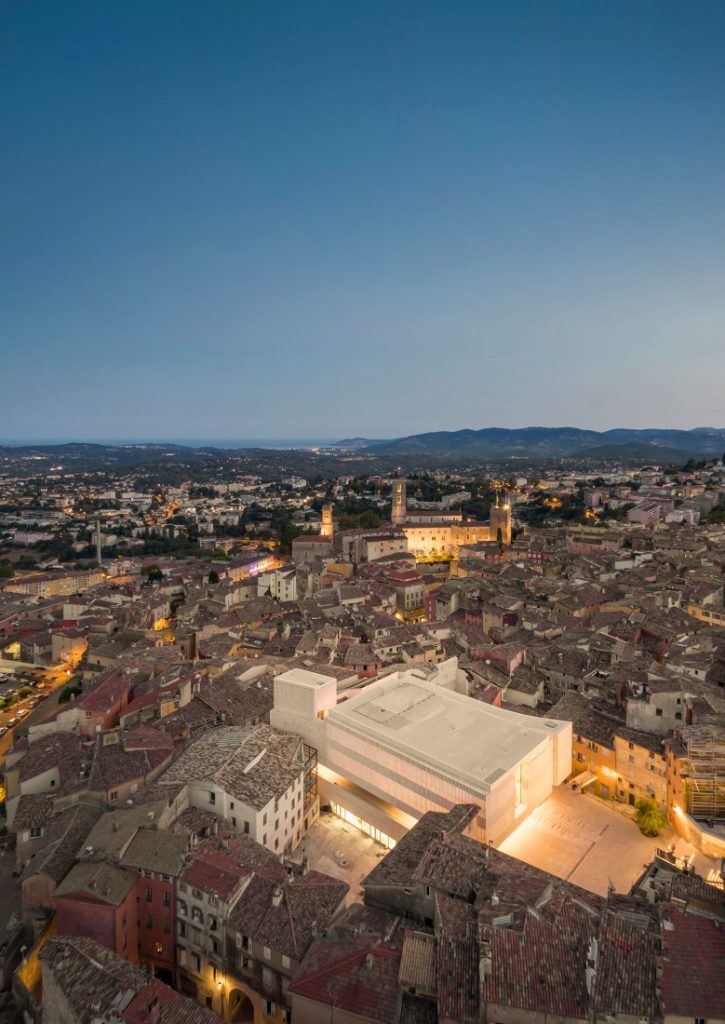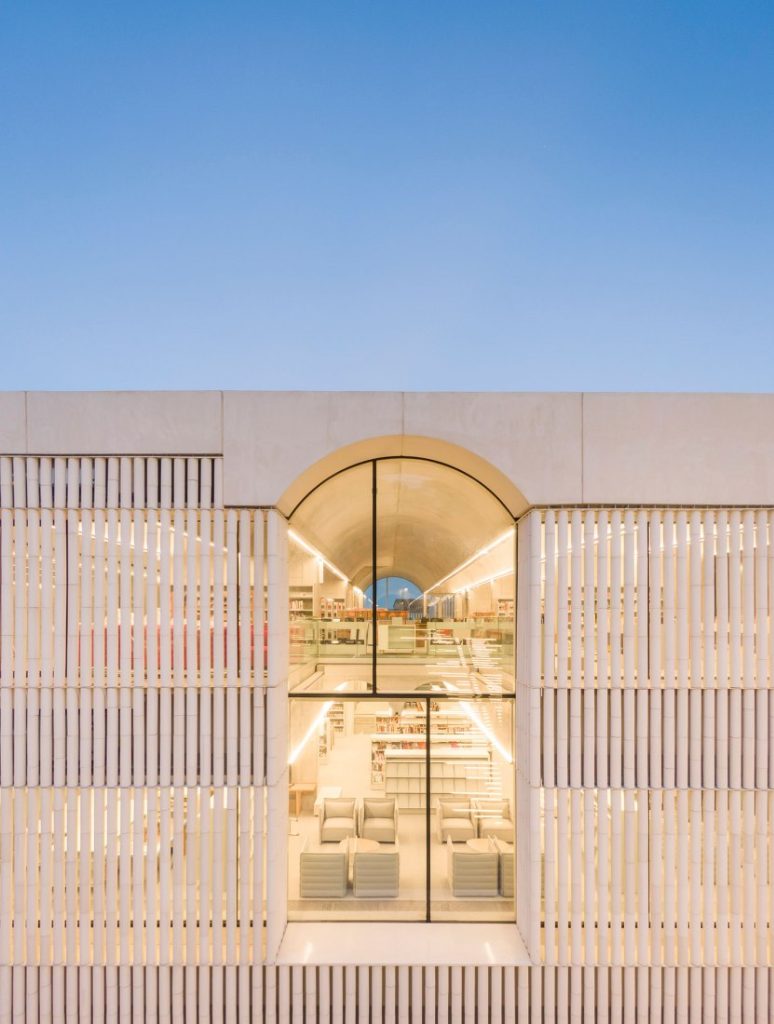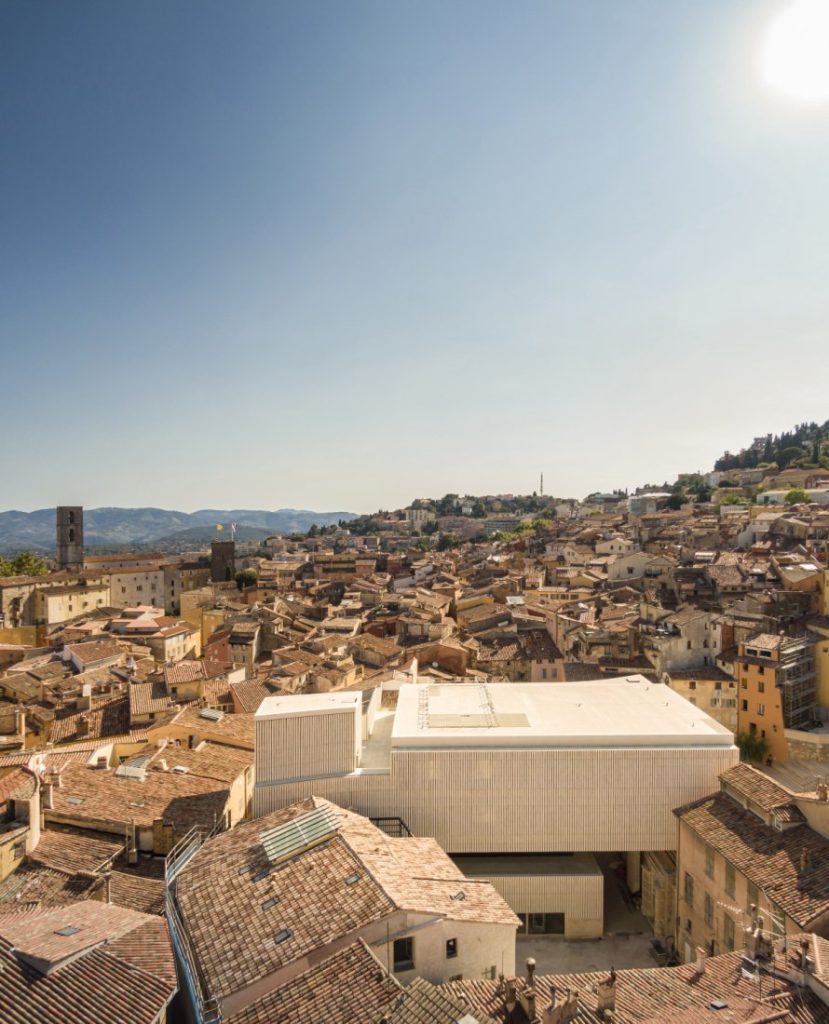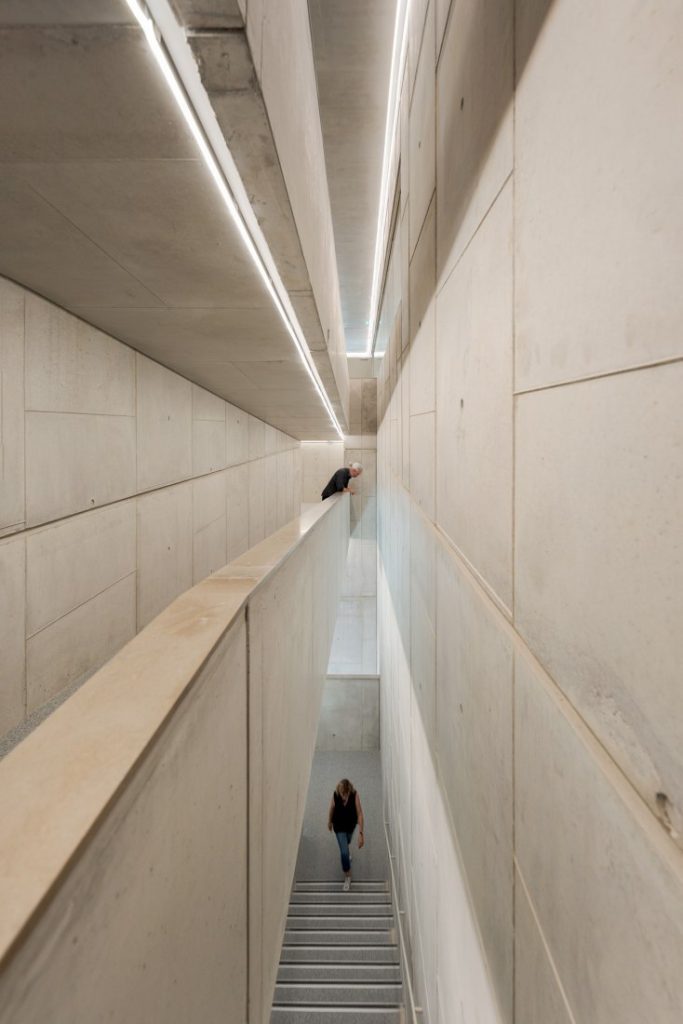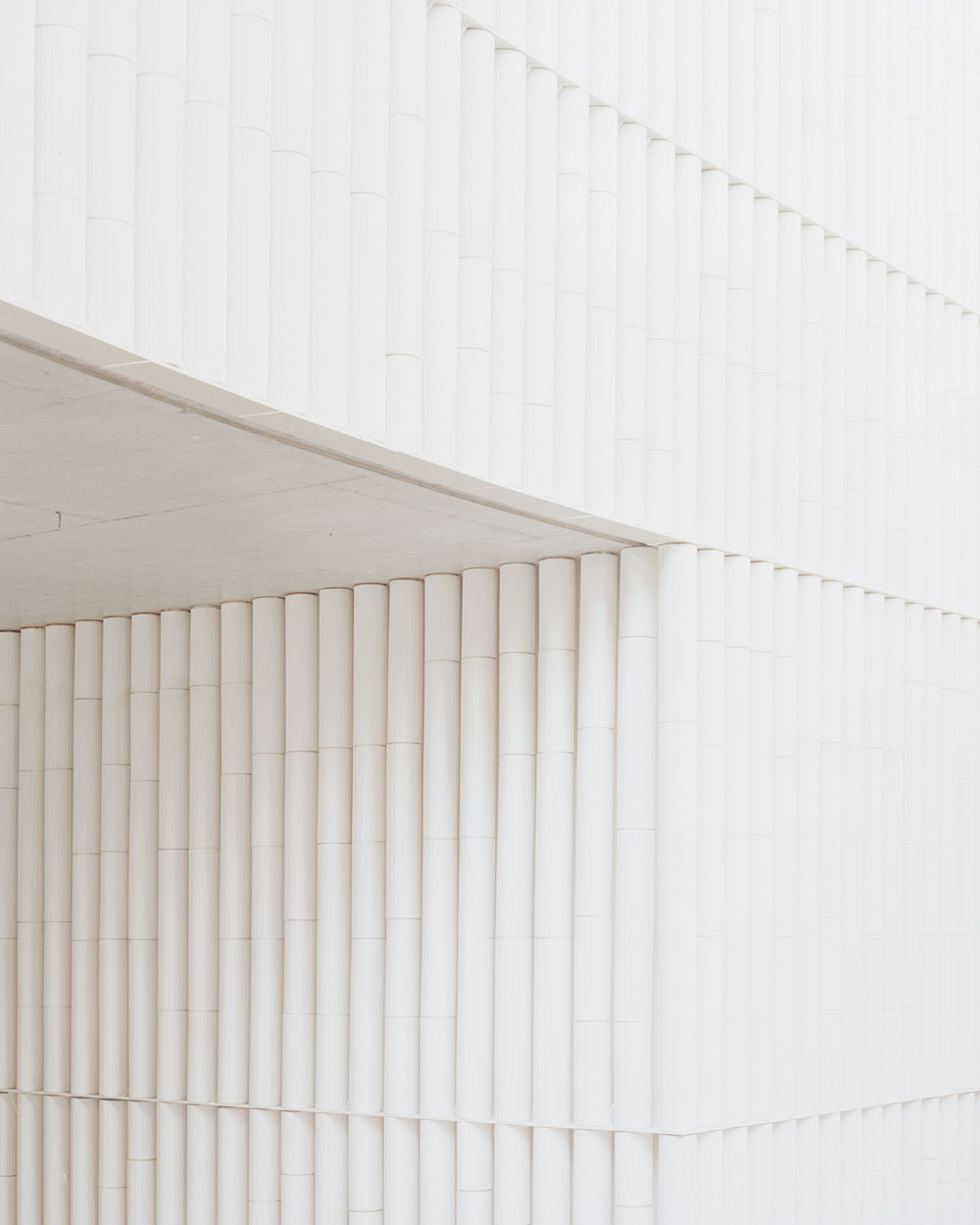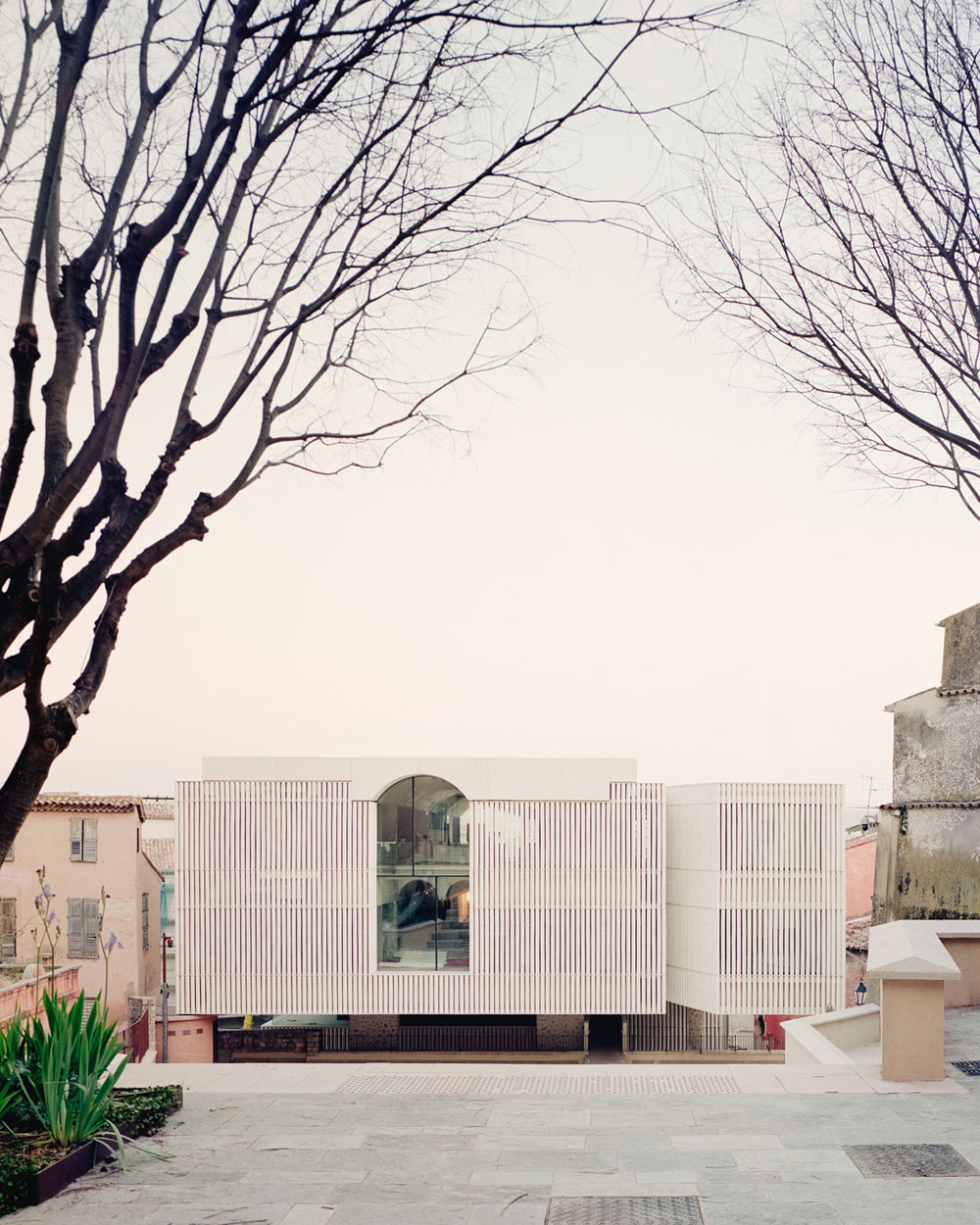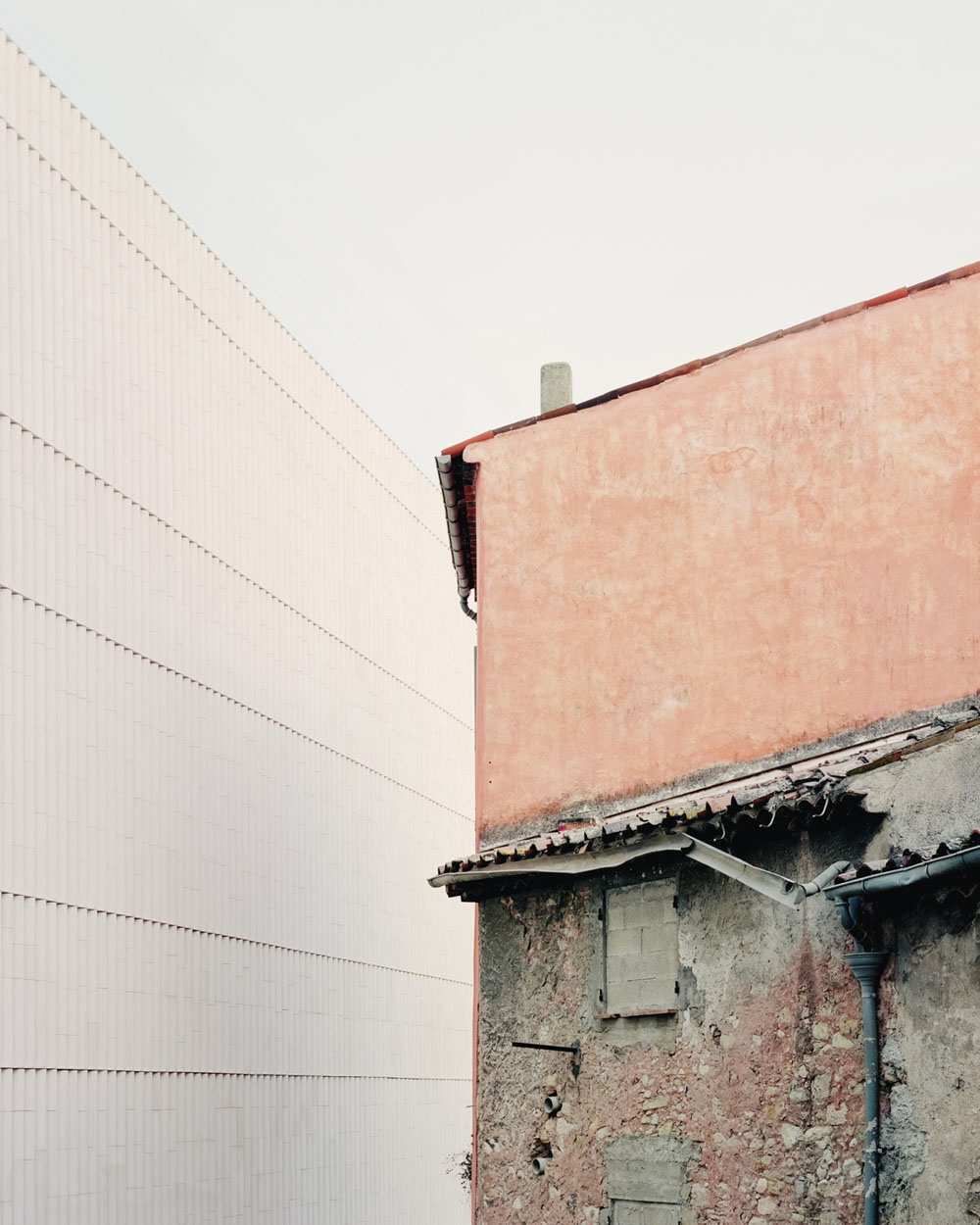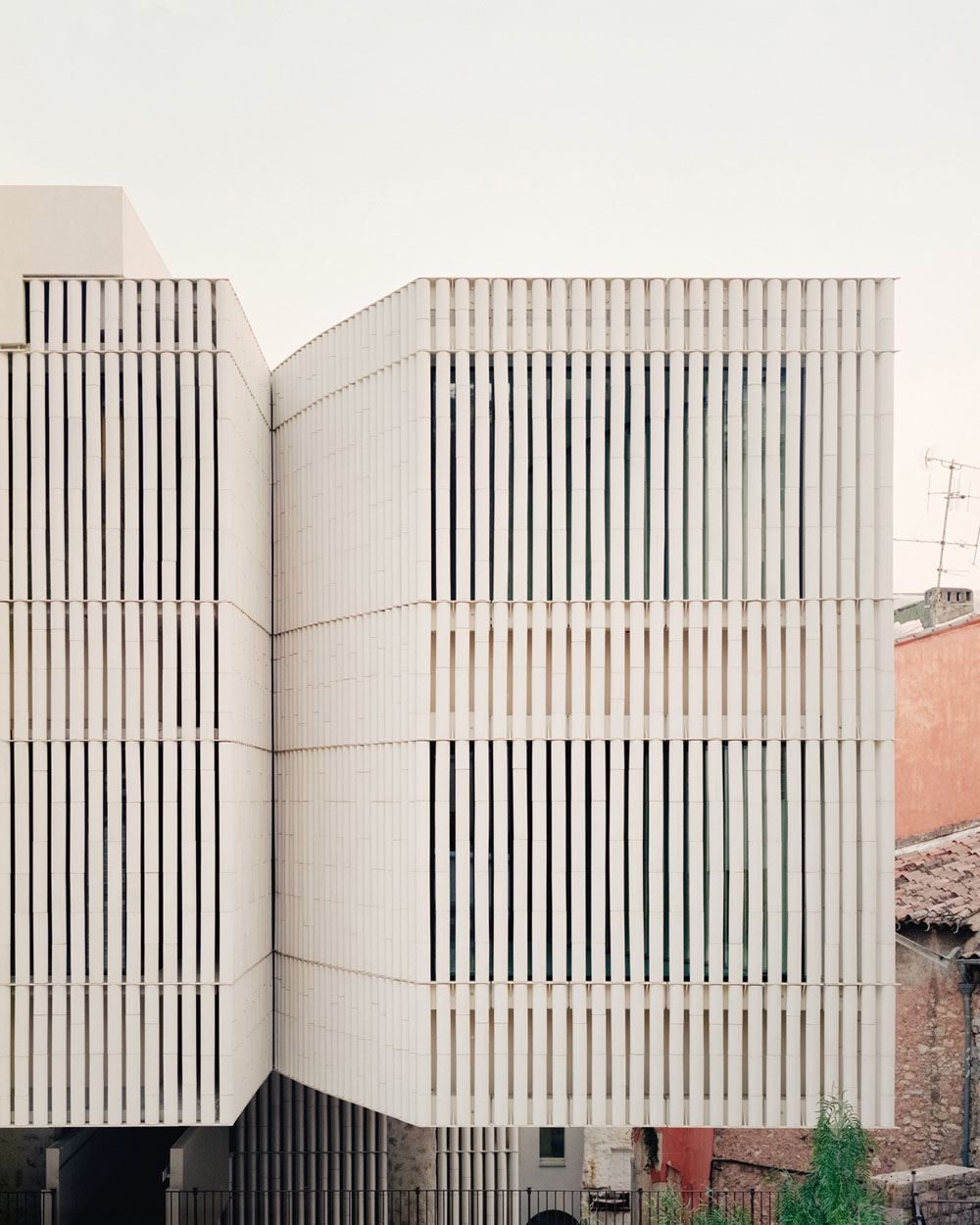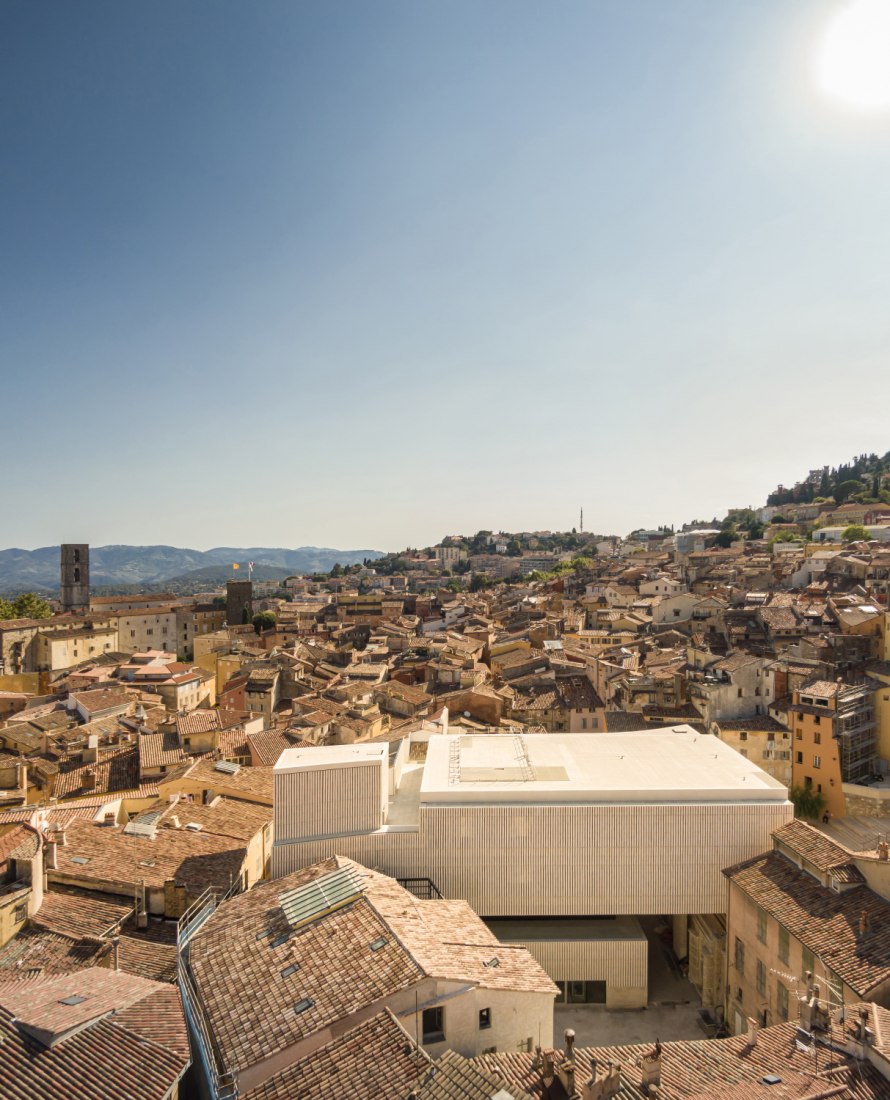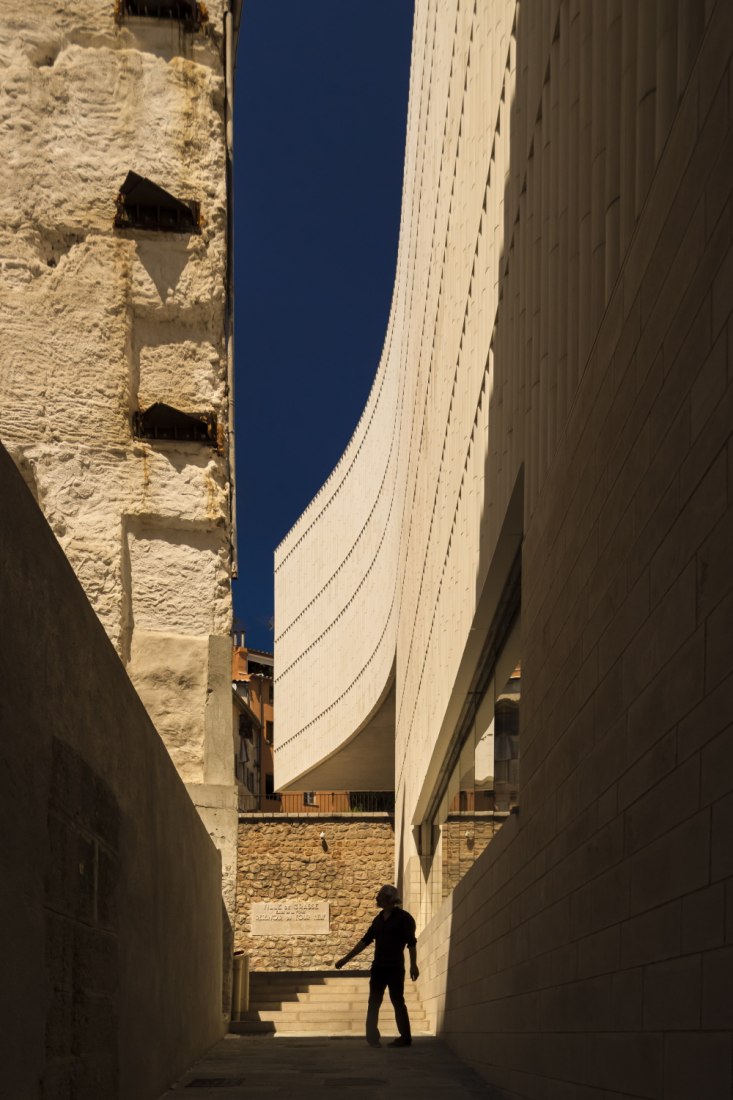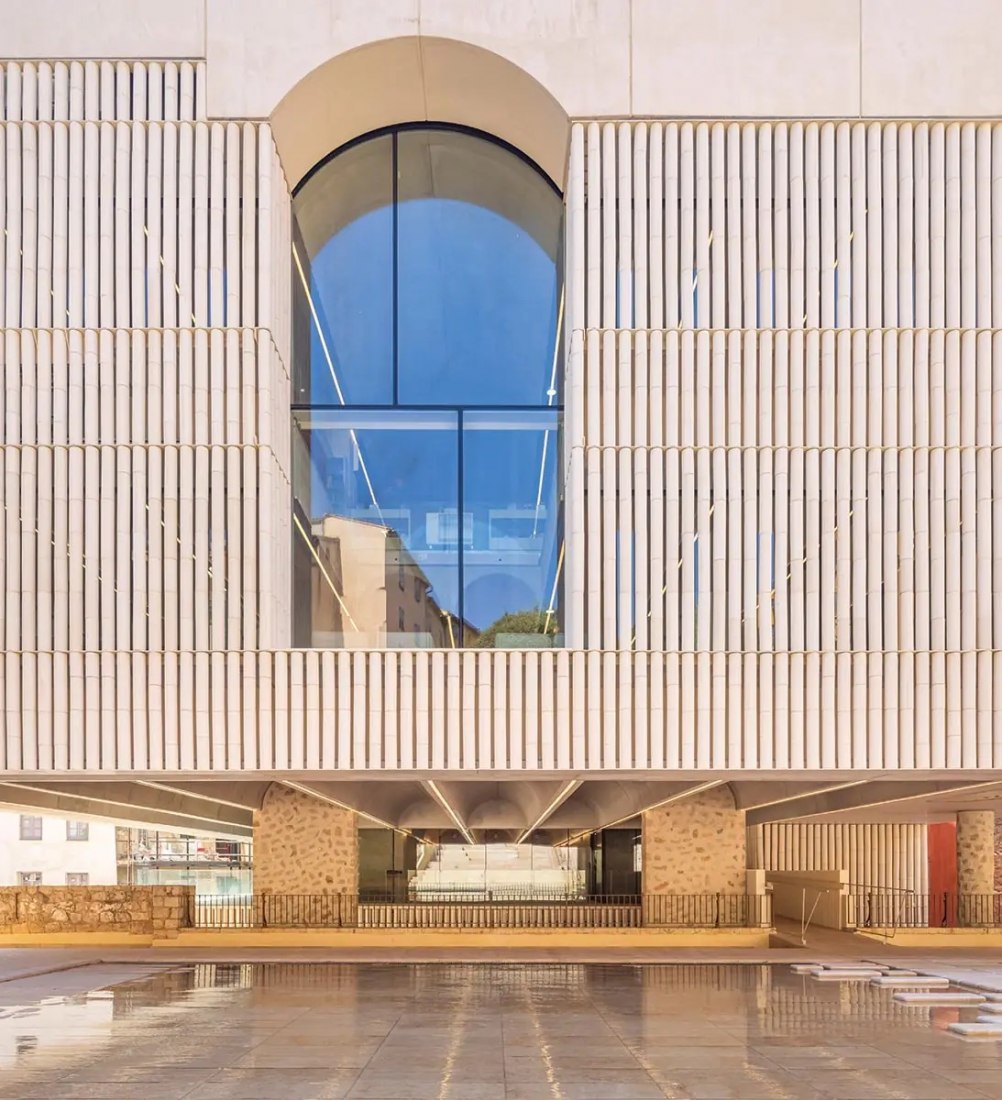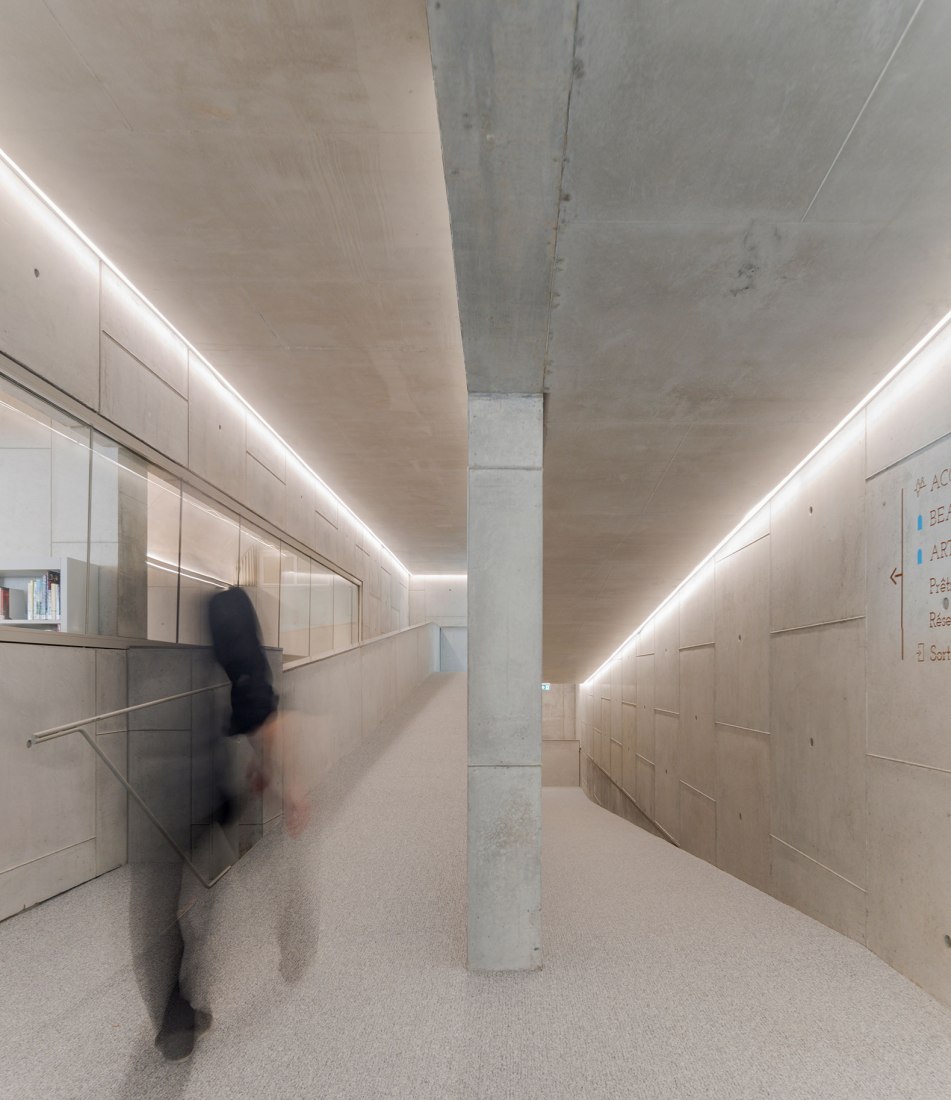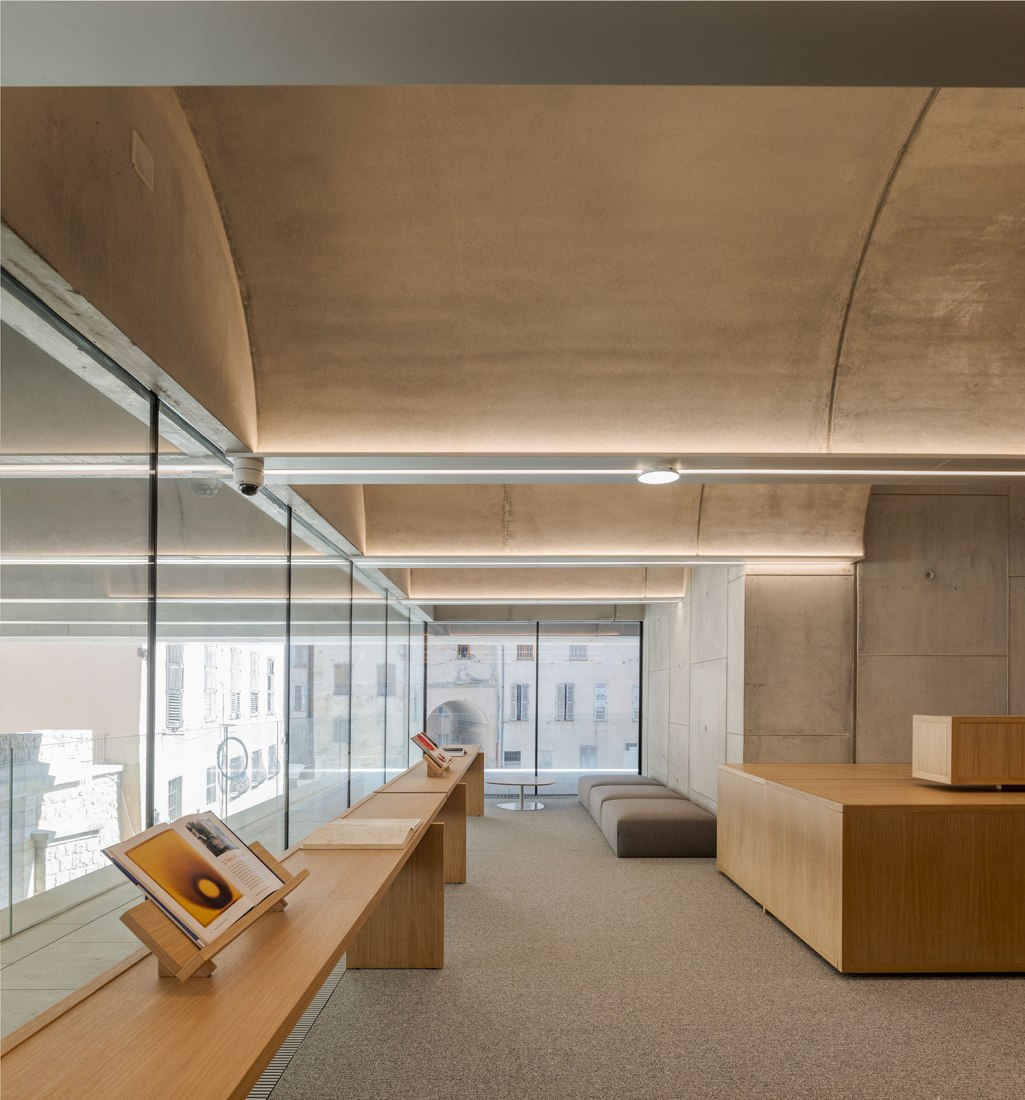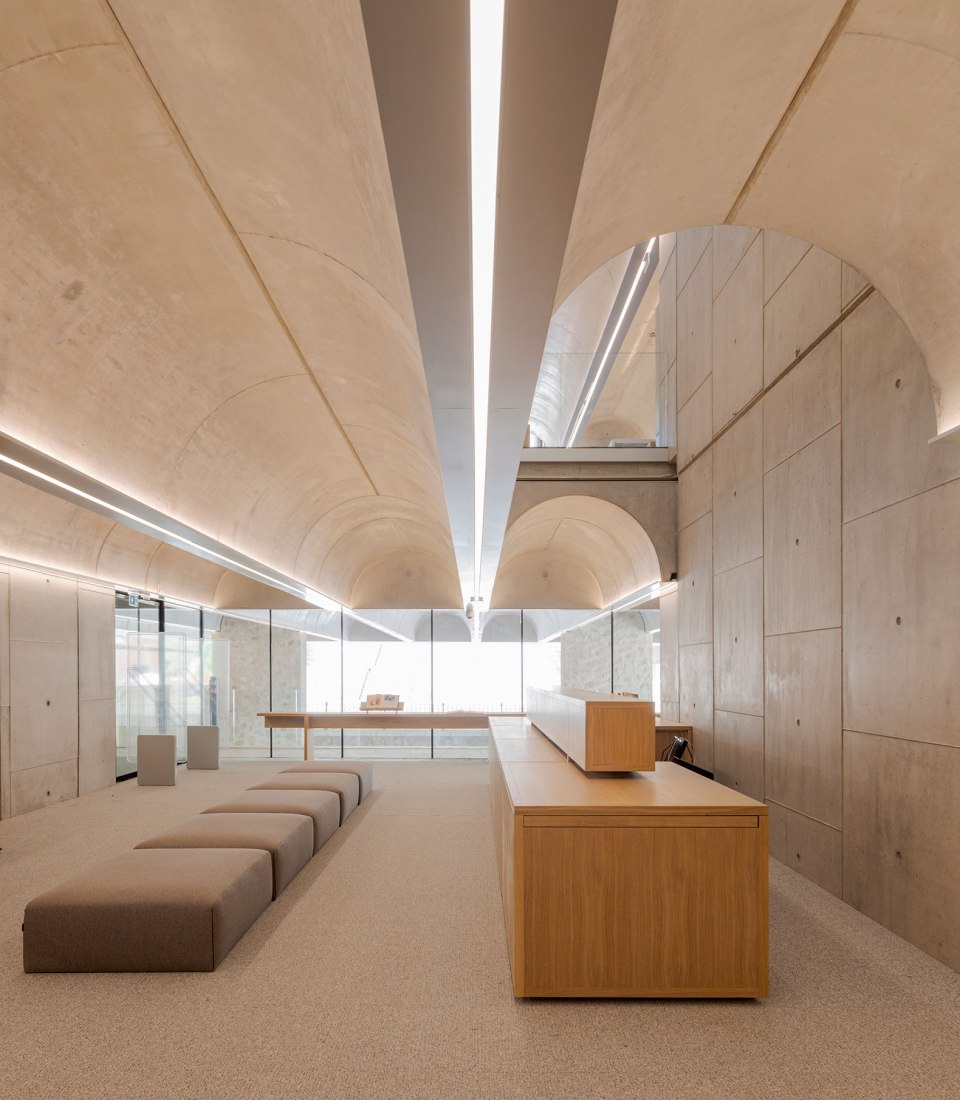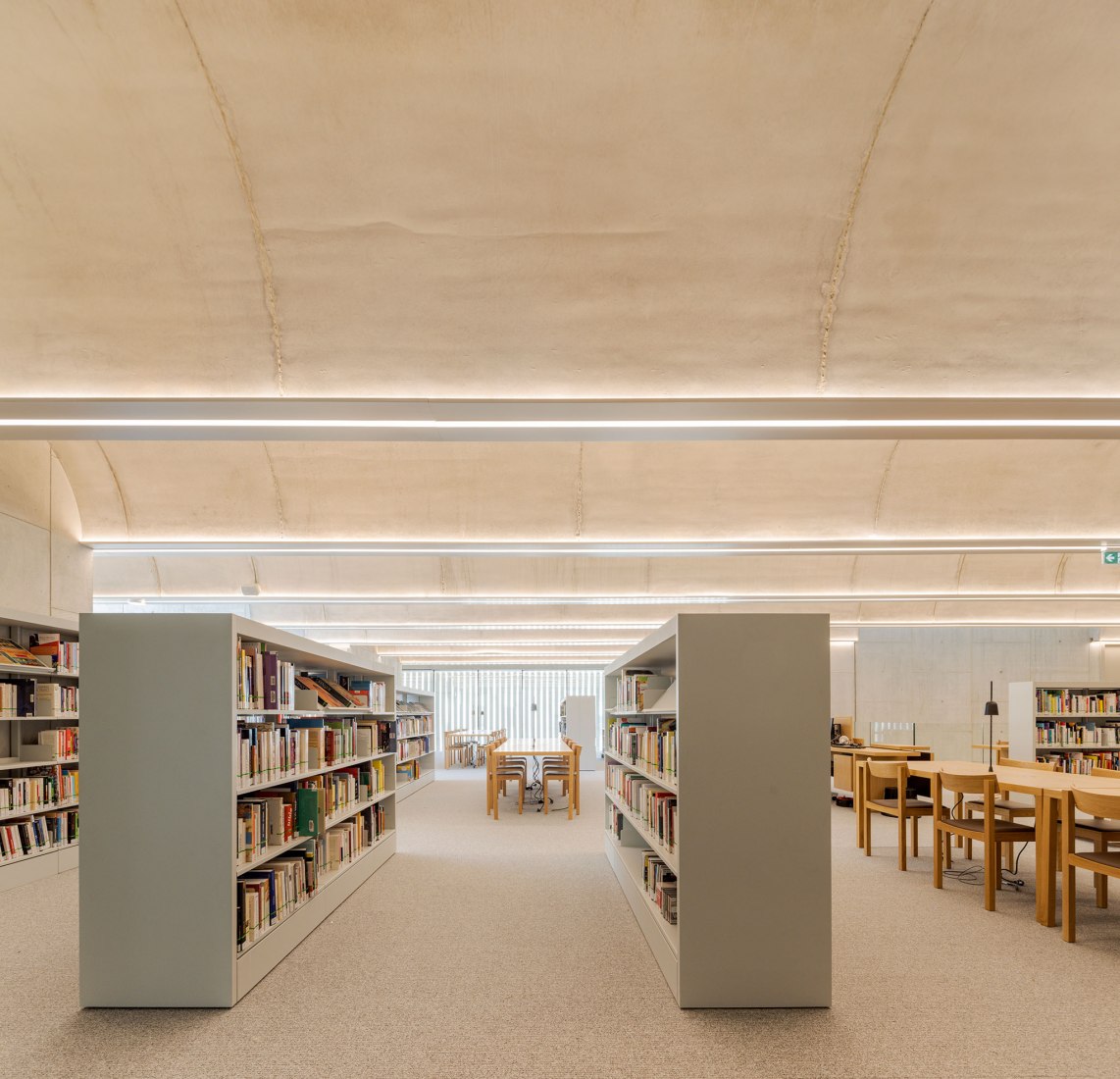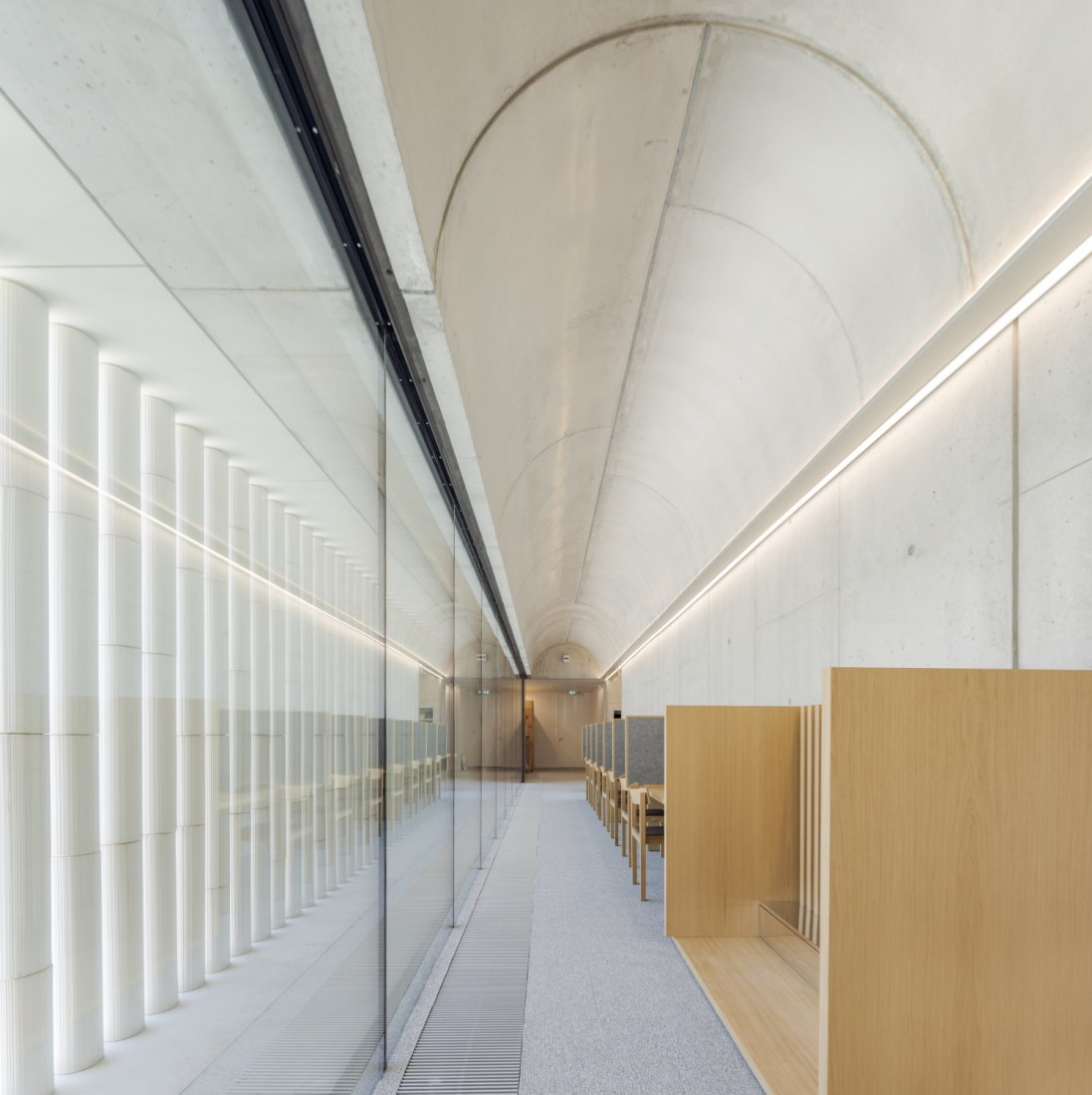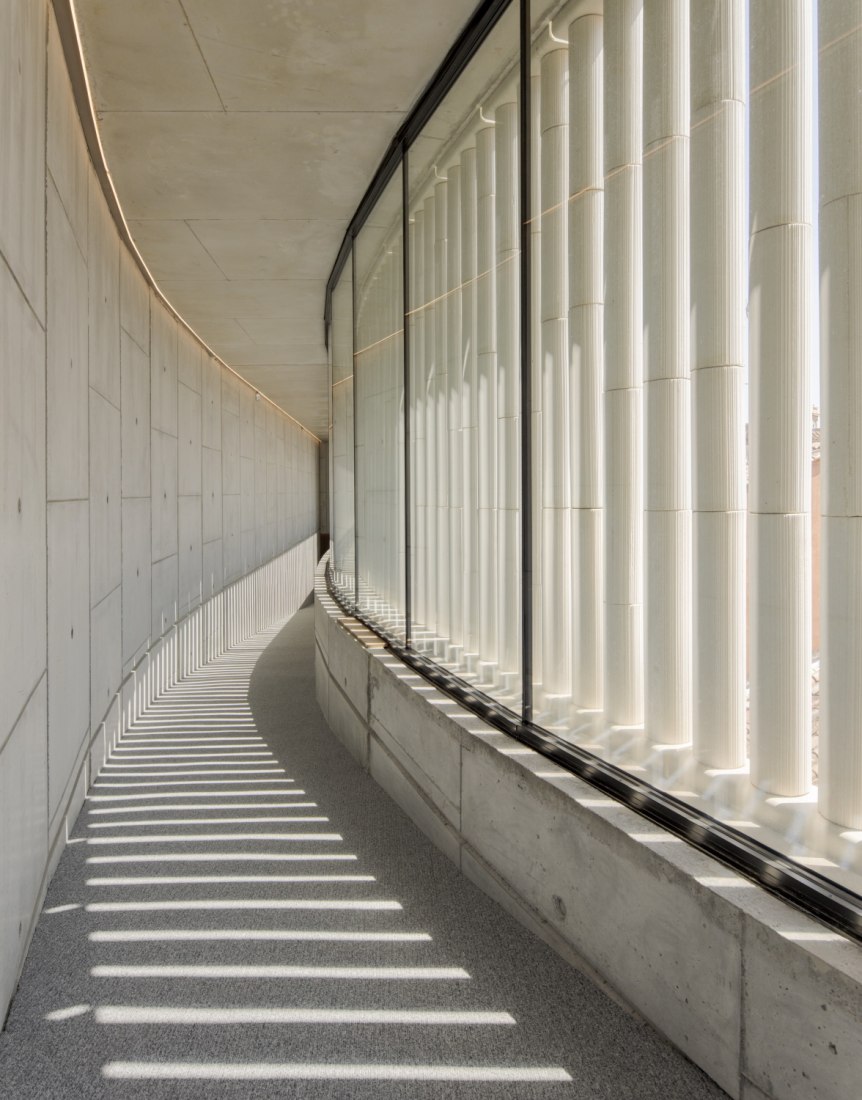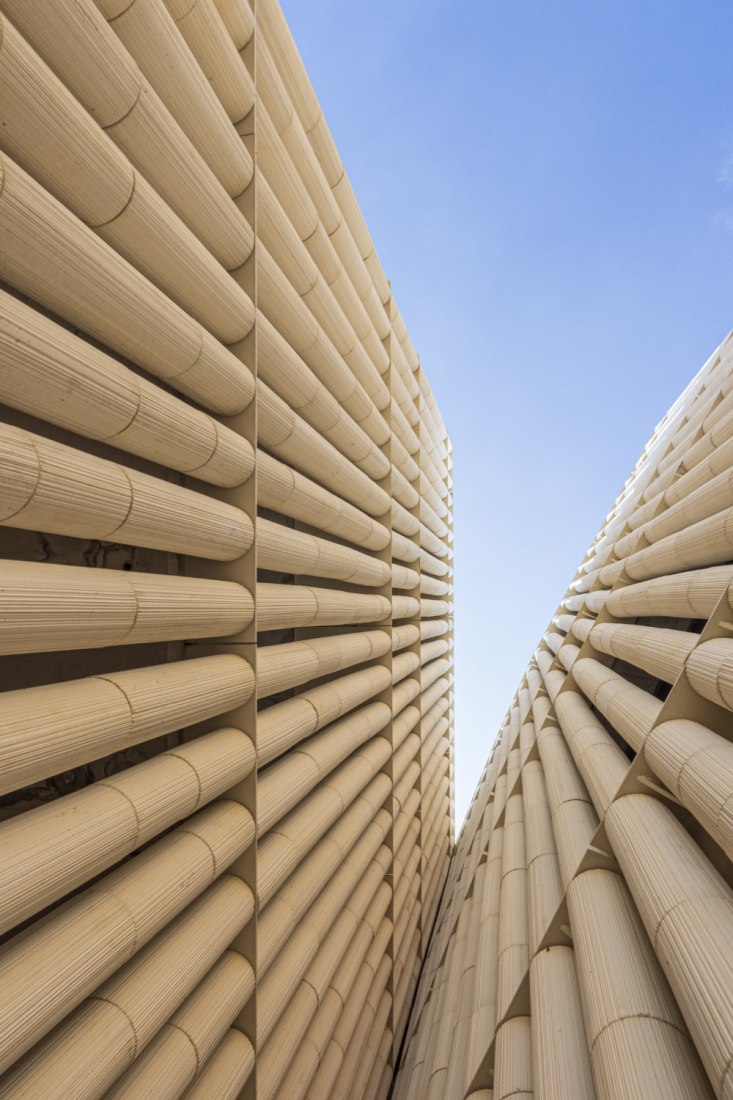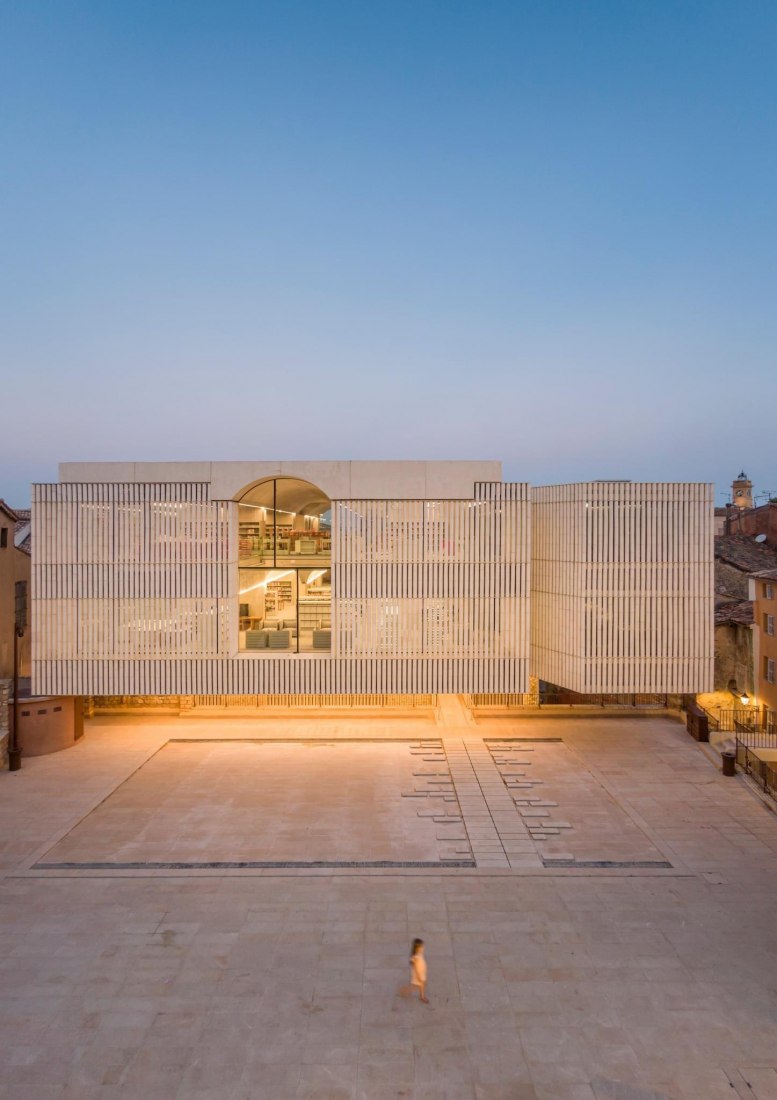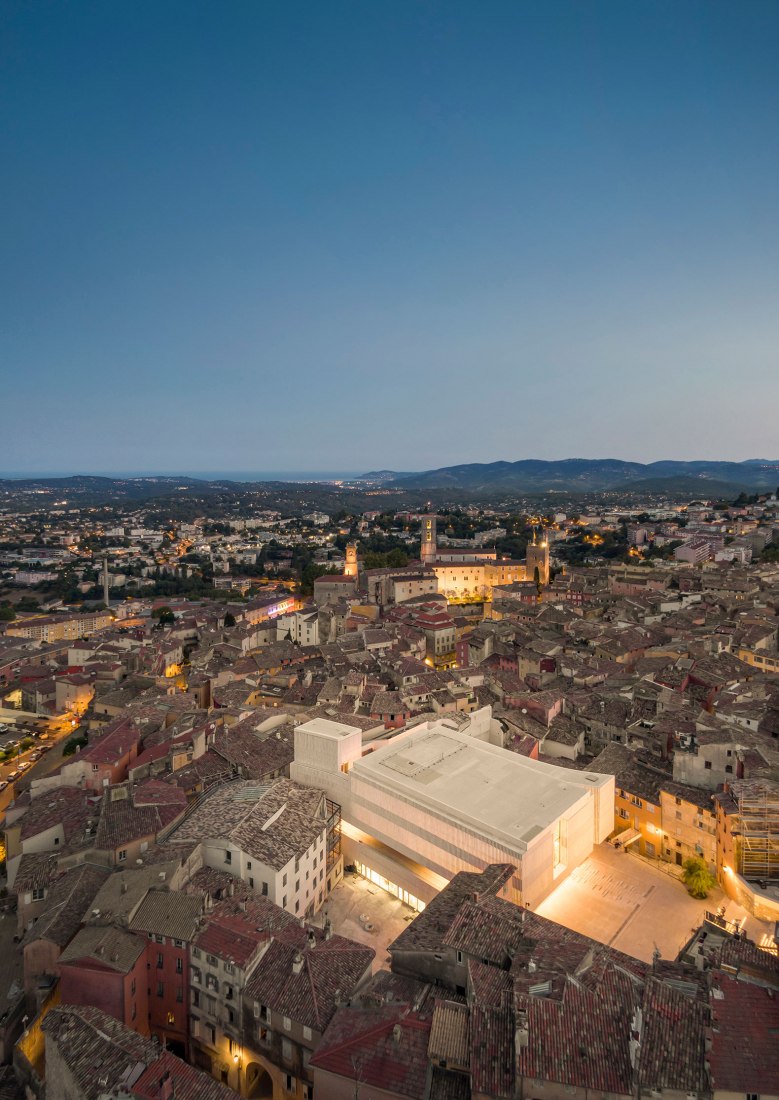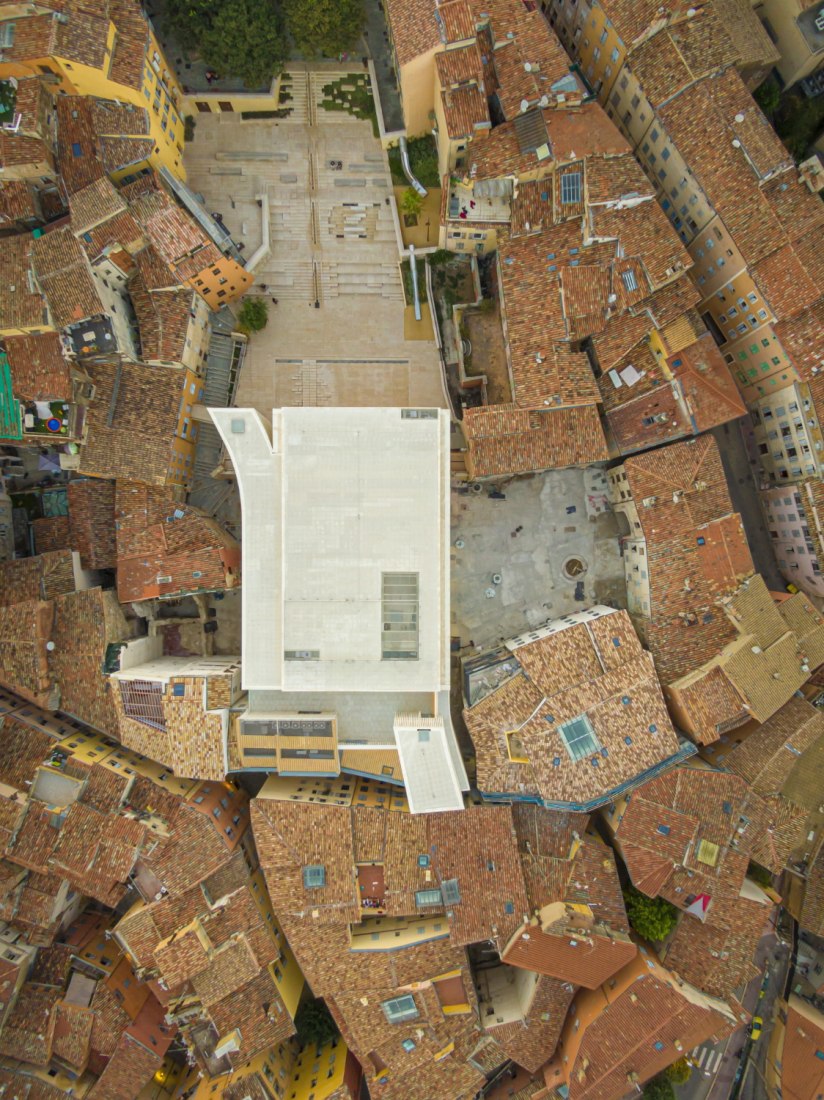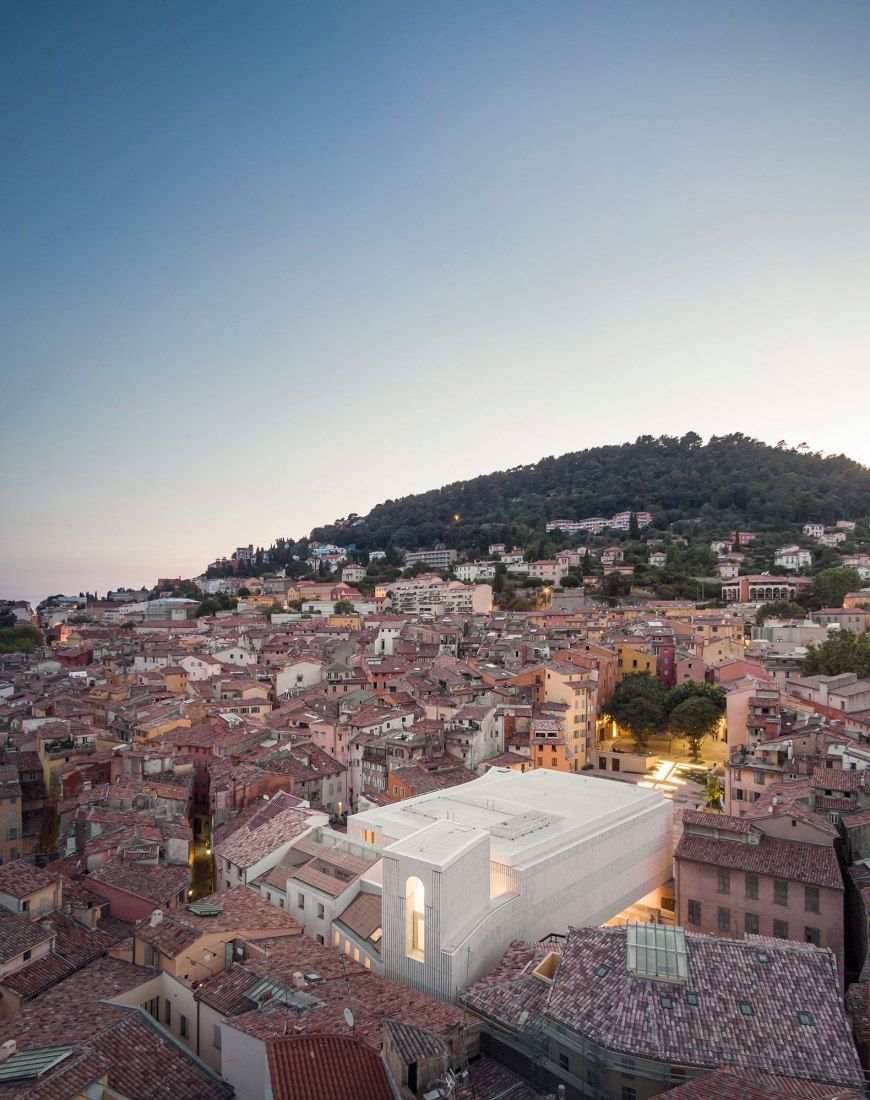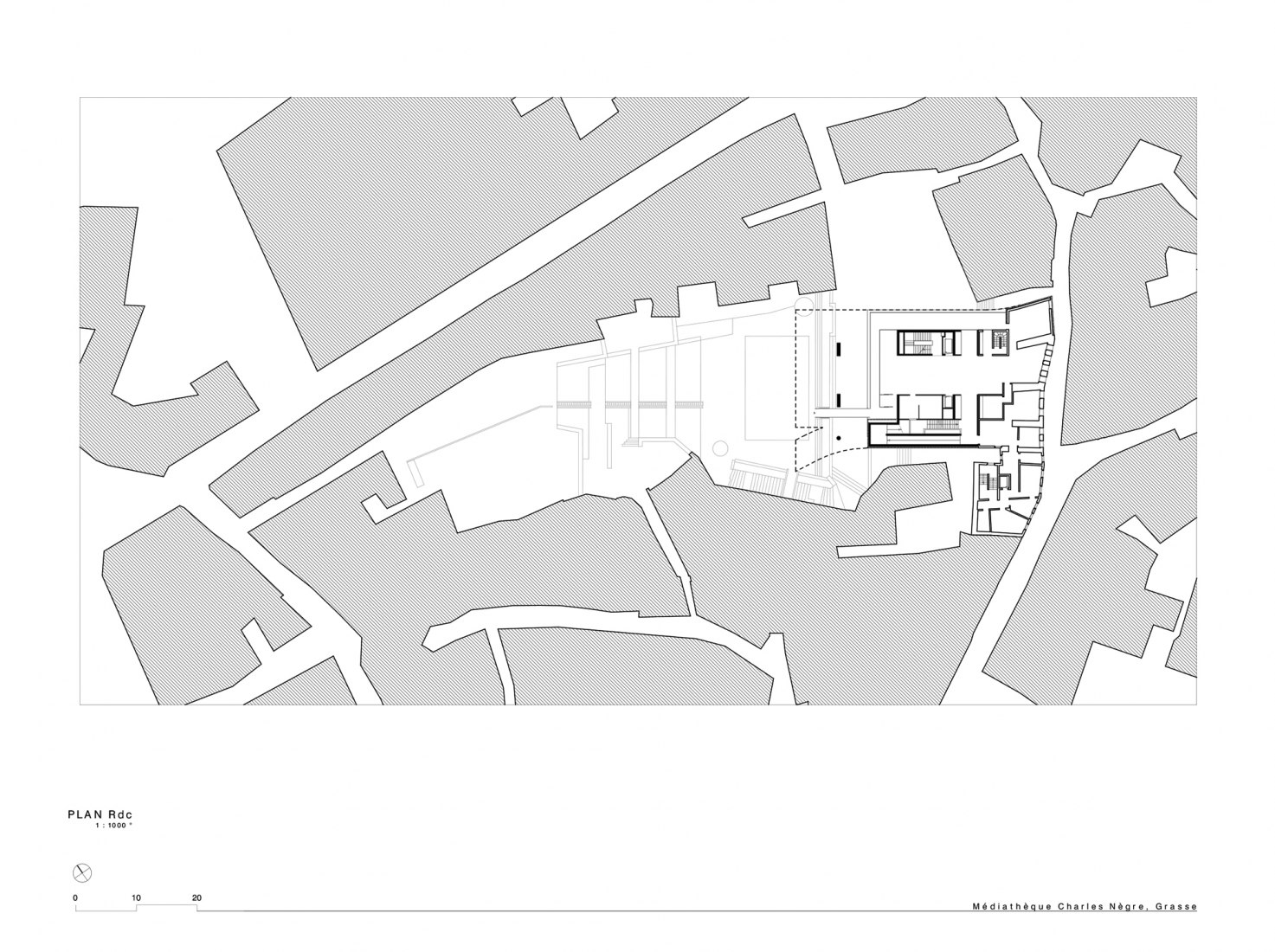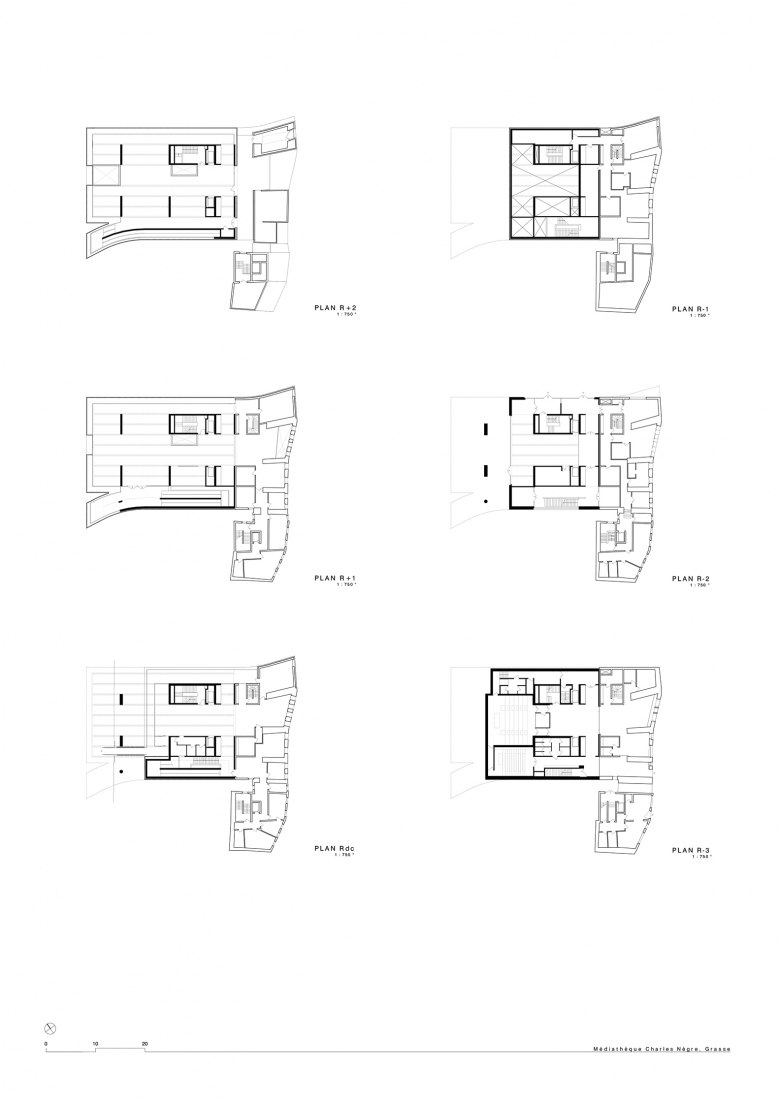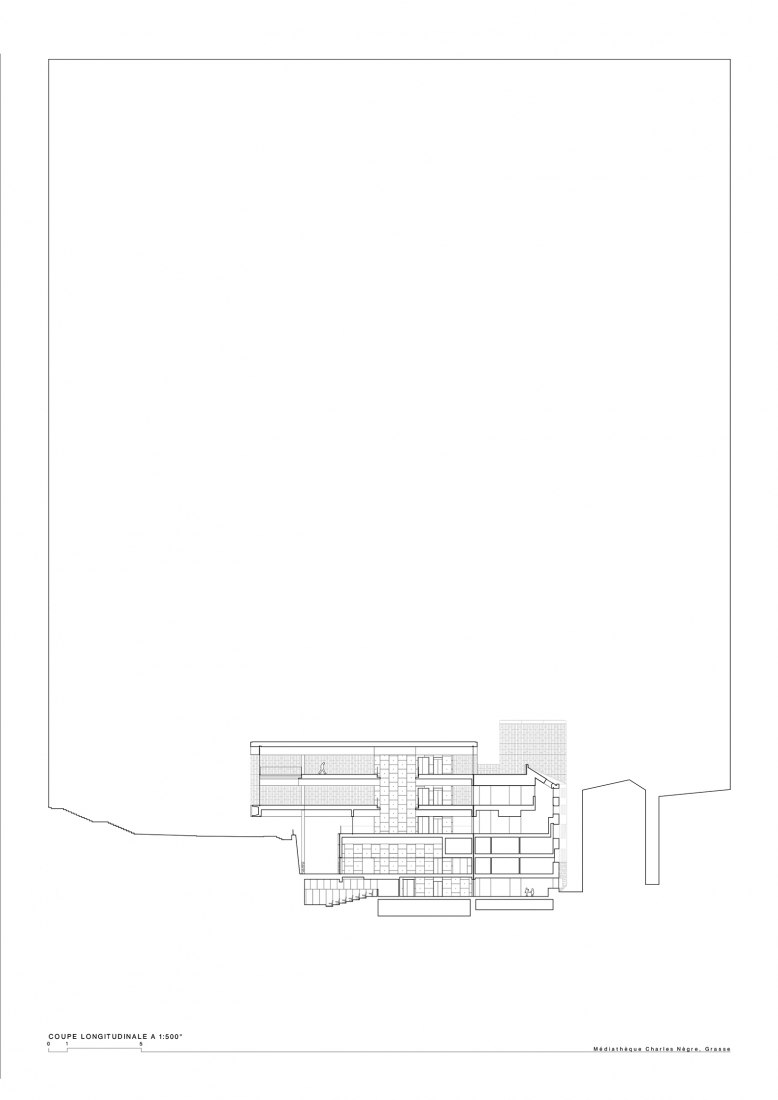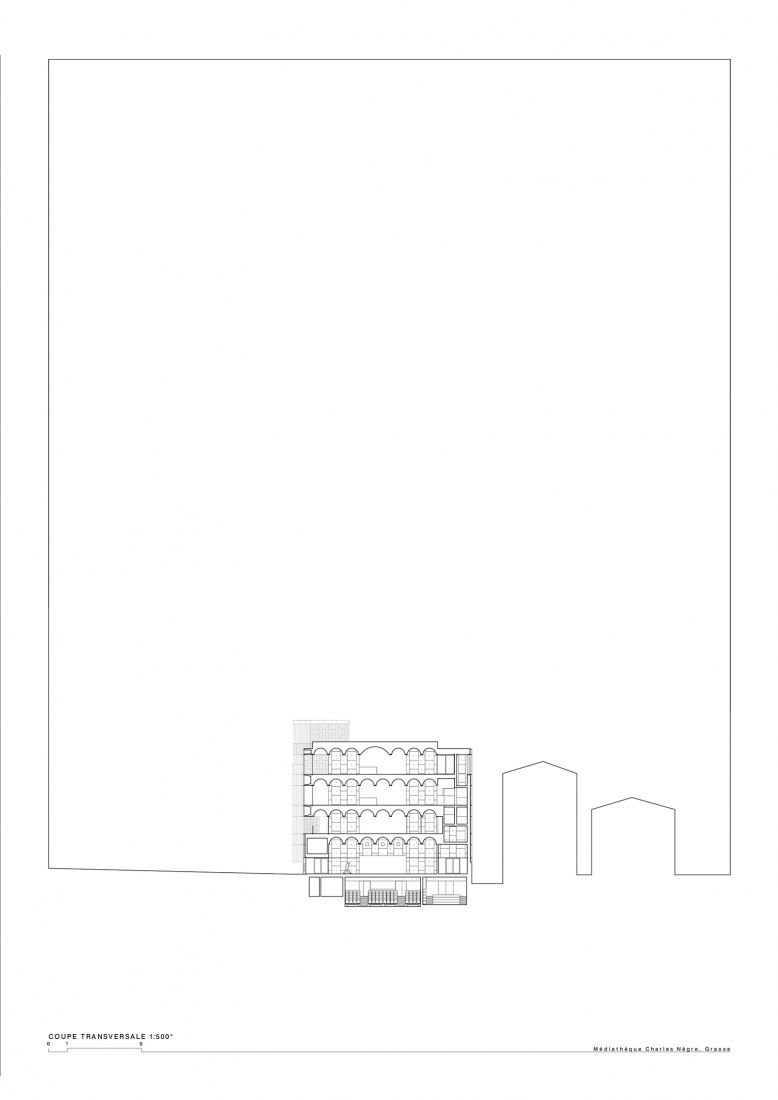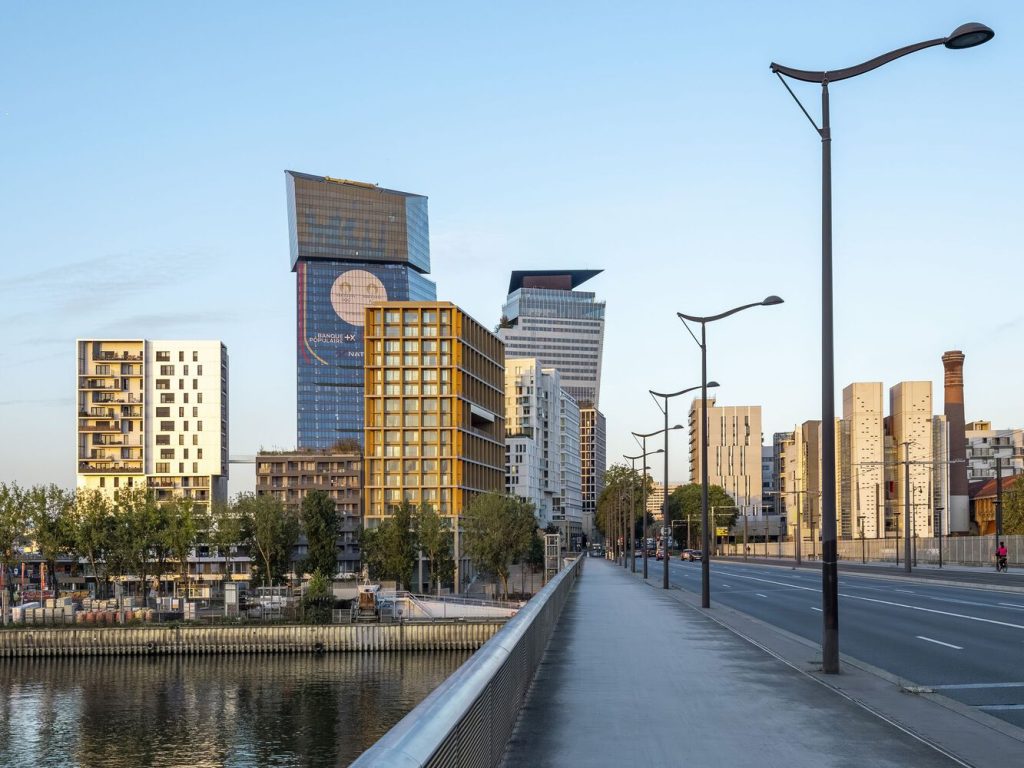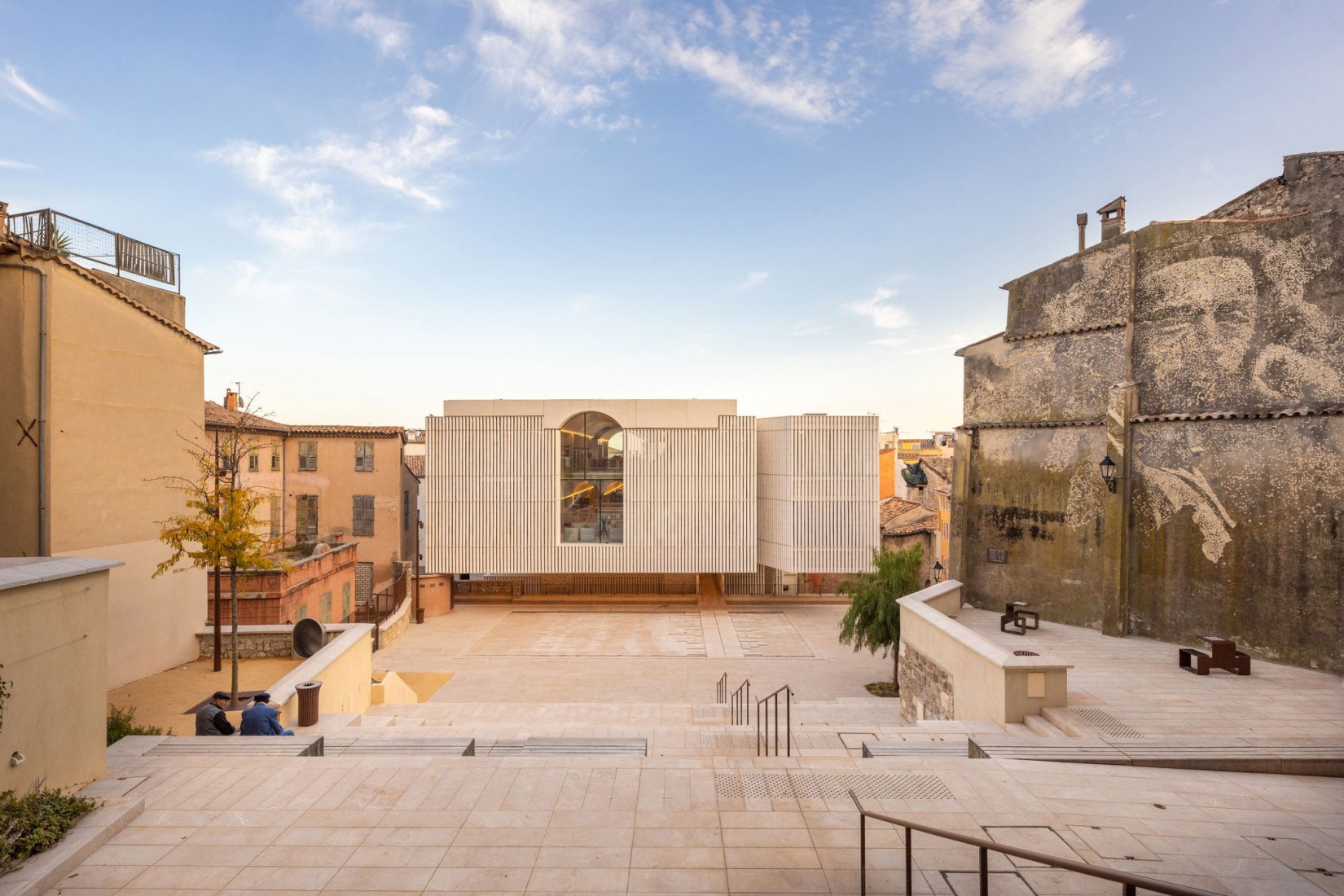
Charles Nègre Media Library / Ivry Serres, Emmanuelle Beaudouin and Laurent Beaudouin
The city of Grasse in the south of France is particularly touching because of its urban characteristics: narrow streets, freshness, colour, relationship to the sky, vaulted passages, steep slopes. The new Charles Nègre media library, designed by Emmanuelle and Laurent Beaudouin and Ivry Serres is based on an architectural approach that is very attentive to the context and fits in well with the city’s heritage. The media library is inspired by the unique character of the urban structure and plays with the tensions and proximities between the buildings. The project also takes up the subtle material relationships between the public buildings and the urban fabric and uses, with a modern vision, some of the traditional language and materials. As a counterpoint to this density, the building offers visual and scenic openings to the neighbourhood and to the distance. The building thus becomes a place from which to contemplate the city. A tower/belvedere on the street allows a direct view towards the house of the great Grasse artist Charles Nègre, while the terrace of the top level highlights a frontal view of the sea and another framing leads to the tower of the Cathedral Notre Dame du Puy.
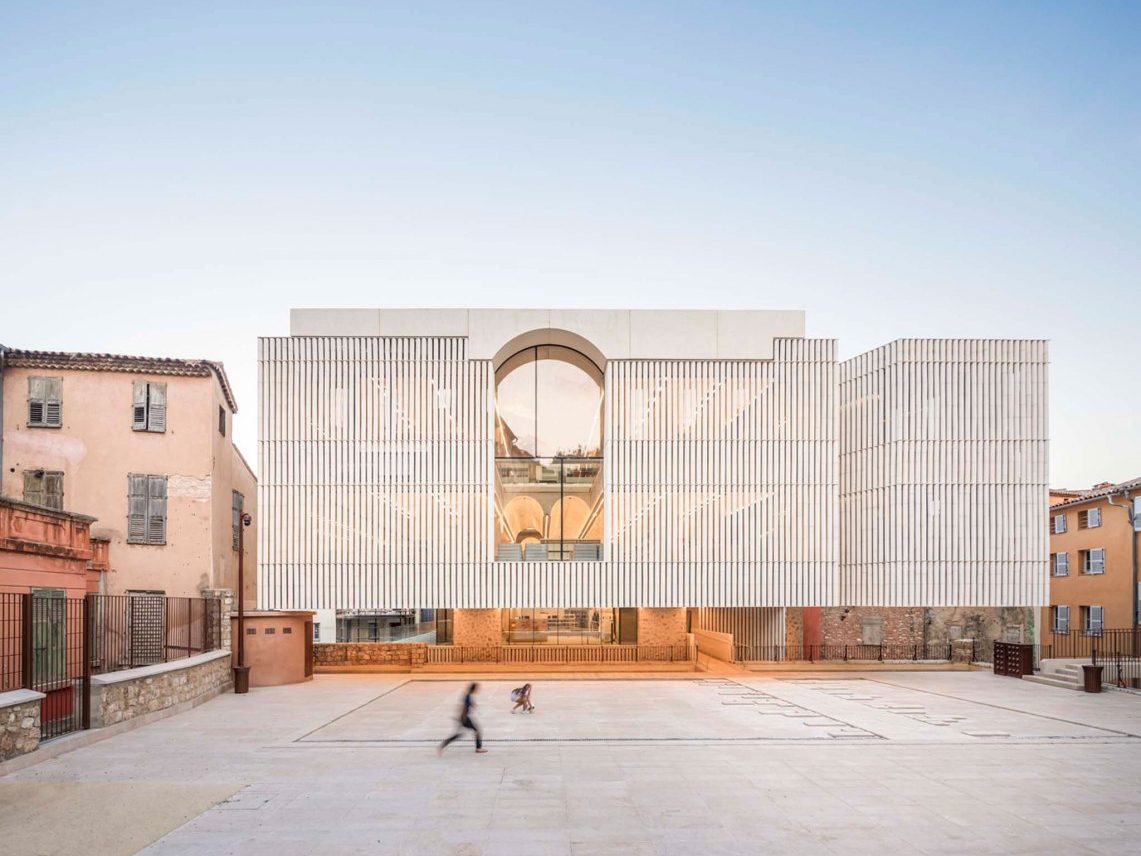
The Media Library is really thought of as a space permeable to light while preserving interior coolness. The greatest attention is given to the quality of the lighting of the interior. The reading spaces receive subdued daylight, softened by fluted white concrete columns that envelop the building. These columns protect the recessed glass façade from direct sunlight. The sunlight also penetrates directly into the interior through a skylight that crosses the two levels of the reading rooms to light the reception area. This solution becomes reversible in the evening so that the building softly lights the public space like a lantern. The building is a light sponge during the day and becomes an urban photophore in the evening. The project responds to the paradox of being both visible through the strength and quality of its presence, and discreet in its volumes and materials. The activities of the media library are revealed without being totally displayed to the public eye. It is an urban project as a large covered public space that improves pedestrian relations within the neighbourhood. The media library, located in the heart of the city centre, is not conceived as an isolated monument: it is intended to be a true catalyst for cultural life on the scale of the entire city.
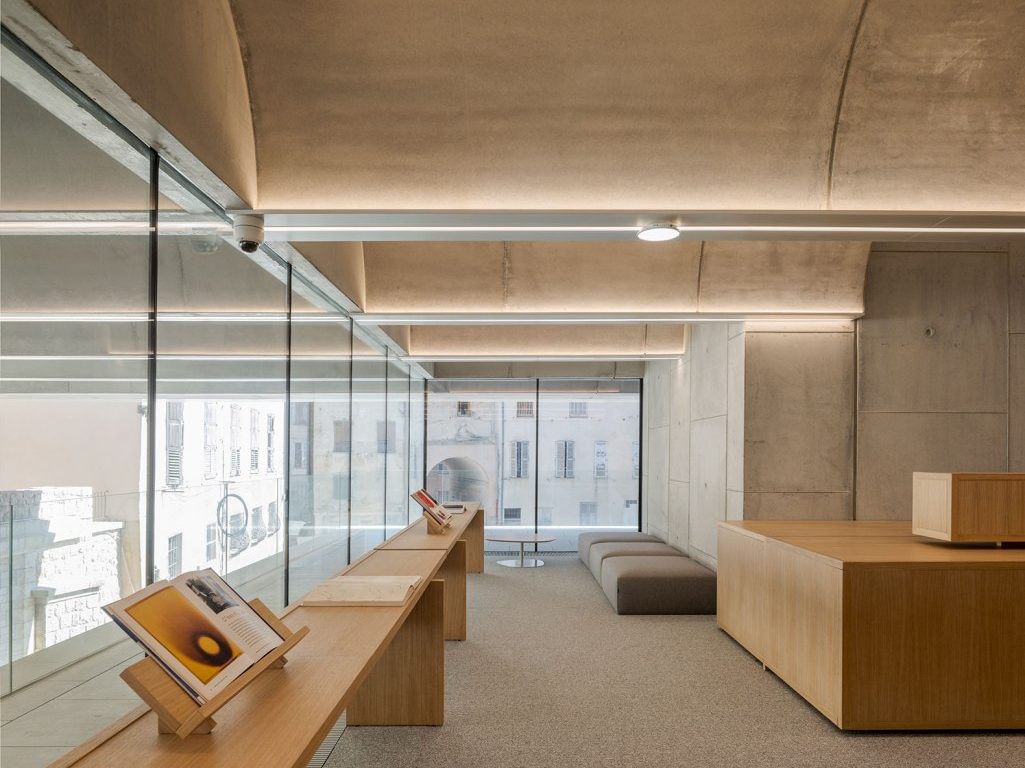
The Program
The media library contains, on six levels, multiple programs including three floors of the library, a multipurpose auditorium of 108 seats, a story time room, an exhibition room, an early childhood space, video rooms, an exhibition room around the Grasse photographer Charles Nègre, work rooms, an art pole, a cinema/music pole, an art library, a poetry space, a café, administrative offices, a janitor’s apartment, a living studio, storage spaces.
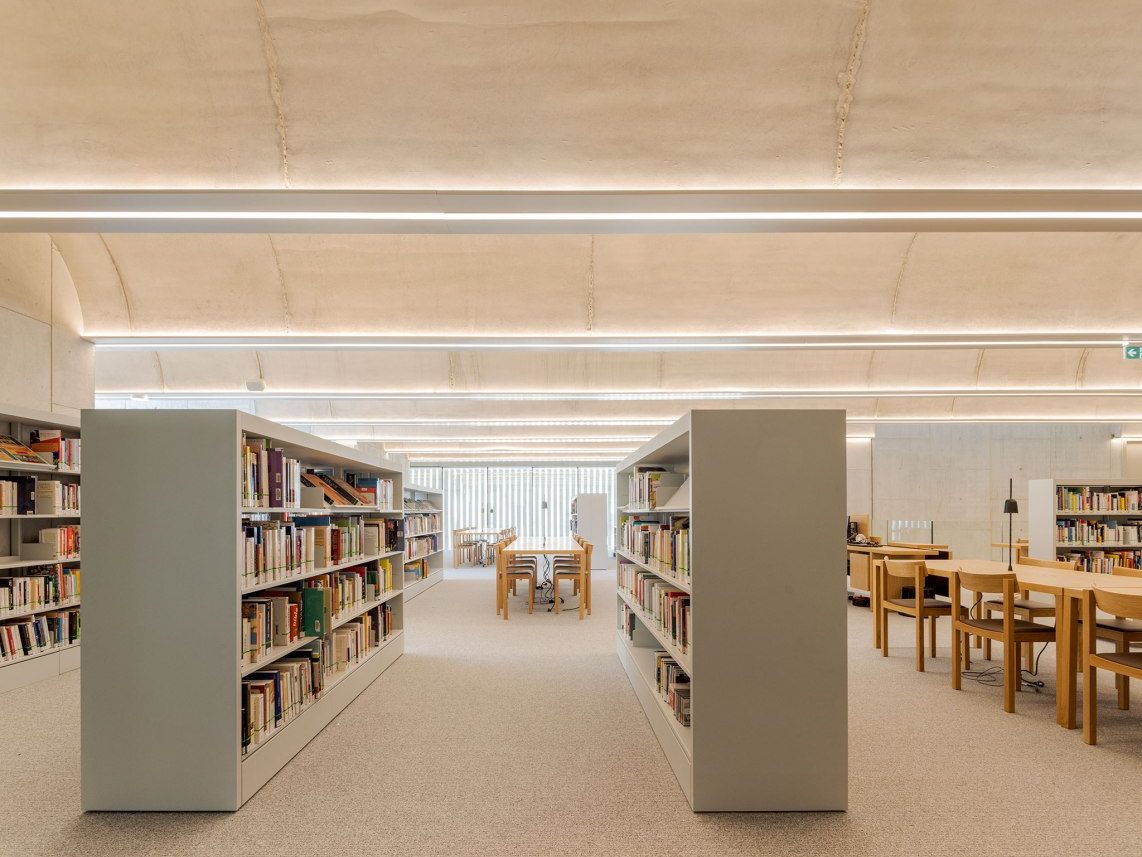
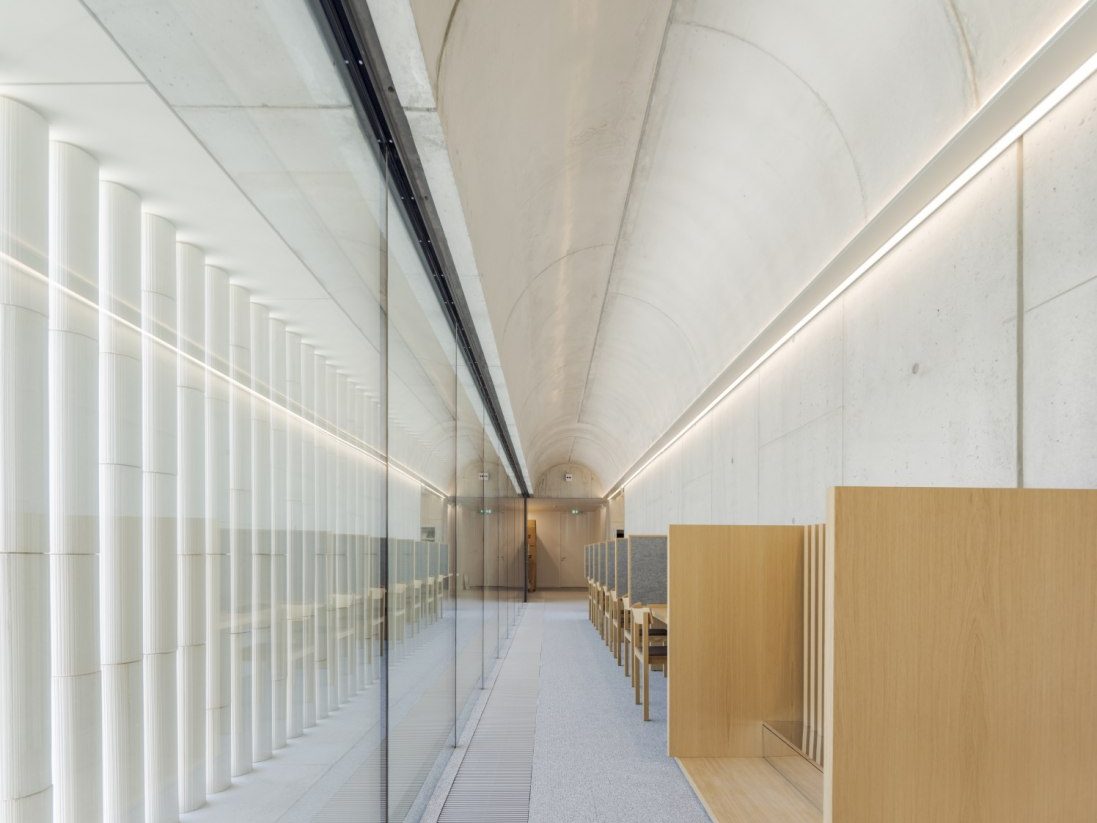
The Site
The city of Grasse in the south of France is particularly exceptional because of its urban characteristics: narrow and winding streets, freshness, colours, atmospheres. The Charles Nègre media library is based on an architectural approach that is very attentive to the context. The building becomes a place from which one can contemplate the city and its steep landscape. A belvedere tower allows a view towards the house of the Grasse artist Charles Nègre (1820-1880), while the terrace of the last level on the seaside faces the old town from which one can see the bell tower of the Cathedral, the Sarrasine tower and the Clock tower. The site of the media library is in the heart of a sensitive urban renewal zone (ANRU), a preservation and enhancement planning zone (PSMV) with extremely cramped access and construction site.
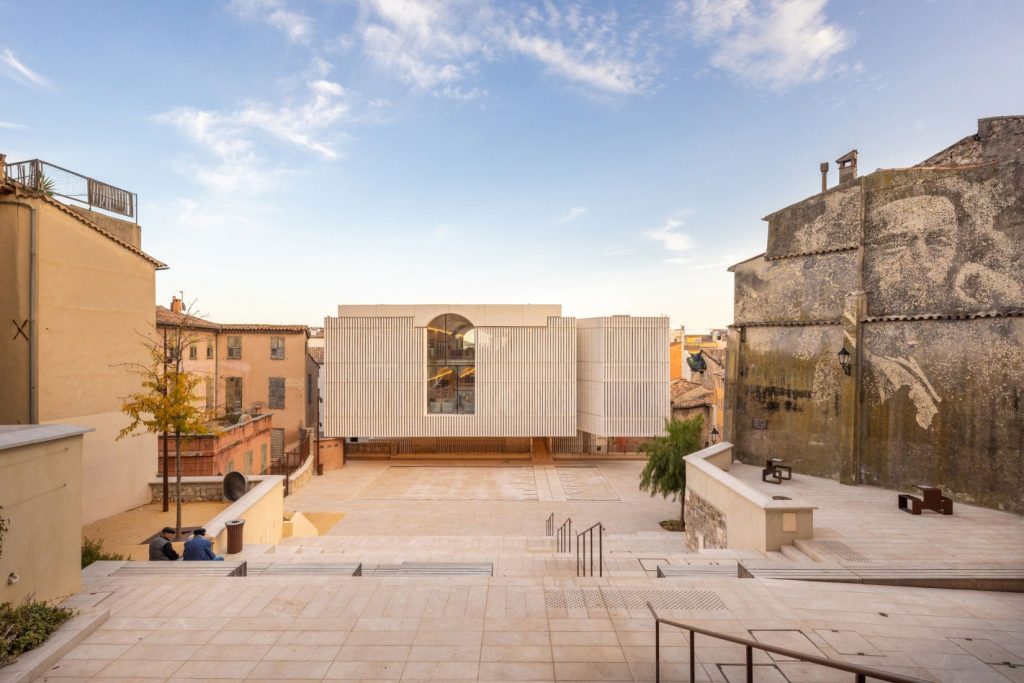
Structure and materiality
The media library is a structural entity that can respond to the seismic constraints and urban complexity of the site. The site proposed for the competition was not entirely used, to favour public spaces. The building overlooks a pedestrian alley as well as a water reservoir that supplies the downtown area and whose roof is transformed into a public space. It also backs onto existing buildings on the street side whose structures and facades have been preserved. The significant overhang above the reservoir is made possible by the vaulted structure of the building. The structure of the media library is entirely on piles, the walls are made of concrete cast in place in carefully calibrated forms. The vaults are connected to the circulation cores allowing the balance of the cantilever. This homogeneous and coherent system of structure allows it to balance the masses, to brace and to obtain an important corbelling. The floors are made of architectural concrete vaults giving a constructive and aesthetic truth to the project. As this bracing is not symmetrical and is eccentric to the centre of gravity of the building. The side ramp is also corbelled and detaches itself by curving to follow the movement of the alley. The floors and vaults ensure both the comfort of the reading spaces and the structural efficiency as diaphragms ensure the transfer of forces to the few sails and deep foundations. This structural coherence was made possible by the BET C&E led by the passion of Jean-Marc Weill. All the interior walls are structured by square modules giving the impression of large blocks assembled in staggered rows. The formwork has been covered with a skin of bakelite plywood with chamfers forming joints in relief.
- Architects: Ivry Serres, Emmanuelle Beaudouin and Laurent Beaudouin
- Client: City of Grasse
- Team: Ivry Serres Architecture- Ivry Serres, Benjamin Vassia, Hugo Marquet. Beaudouin Architects – Emmanuelle Beaudouin, Laurent Beaudouin, Aurélie Husson, Farida Aroun, Noémie Gaineau, Christophe Thierry, Charles Signe
- Structural design: C&E Ingénierie, Jean-Marc Weill
- Fluid design: Inex
- Economist: Touzanne et Associès
- Area: 3,663 sqm
- Year: 2022
